Advanced Systems News
Auburn ranks among Top 80 for patents in latest National Academy of Inventors recognition
Auburn University has been ranked among the Top 100 U.S. Universities Granted Utility Patents in 2024, a list published recently by the National Academy of Inventors (NAI).
With 20 new patents issued in 2024, Auburn was ranked 80th on the list, seven places higher than the previous year. The list was created to highlight and celebrate American innovation and to recognize those universities that play a large role in advancing the innovation ecosystem within the U.S. and beyond.
Notable among Auburn’s 2024 patents are:
- A patent for improving physical components of mechanical systems using data element mapping and analysis — a methodology currently being tested by industry partners; and
- A patent for an additive nanomanufacturing system and method to facilitate the manufacture of 3D-printed materials in space. The technology will soon be tested in a microgravity environment as part of NASA’s Flight Opportunity program.
“We're thrilled that Auburn continues to be featured on this list. It's a testament to the focus on and strength of innovation on our campus,” said Patrick Reed, executive director of Auburn’s Intellectual Property Exchange (IPX). “An issued patent represents potential commercialization opportunity; collaborating with commercialization partners unlocks that potential, turning it into real-world impact. We look forward to putting these patents to work for the benefit of the public."
In addition to the list, Auburn has been recognized by NAI as several faculty members were named NAI fellows and one named an NAI senior member. The prestigious NAI fellows program honors academic inventors “who have demonstrated a spirit of innovation in creating or facilitating outstanding inventions that have made a tangible impact on quality of life, economic development and the welfare of society.”
Current and emeritus faculty members who have previously been recognized as fellows include Mehmet Arik, Yonhua Tzeng, J. David Irwin, Joseph W. Kloepper, John Weete, the late S.D. “Dave” Worley, Bruce Tatarchuk and the late Vitaly Vodyanoy. Jin Wang was the first Auburn faculty member to be named an NAI senior member.
Founded in 2010 to recognize and encourage inventors with patents issued from the United States Patent and Trademark Office, the NAI is a member organization of U.S. and international universities and governmental and non-profit research institutes, with over 4,600 individual inventor members and fellows encompassing more than 260 institutions worldwide.

Nema Shamsaei and Masoud Mahjouri-Samani are patent-holders whose innovations contributed to Auburn University's strong showing on a recent National Academy of Inventors list ranking universities granted utility patents in 2024,
Categories: Advanced Systems, Engineering, Manufacturing
An inside look into Auburn’s RFID Lab
“We’re doing innovation,” said Justin Patton, executive director of Auburn’s world-renowned RFID Lab. Then he stops himself. “A better word, really, is transformation.”
He makes a good point: RFID (an acronym for Radio Frequency Identification) has existed for decades. Allied forces used the technology in WWII to identify whether incoming airplanes were friendly or enemies. But the lab’s student workers, alongside its faculty and staff, are transforming and improving the ways in which tracking technology is used in industries like retail and aviation.
You likely interact with RFID all the time, whether you’re aware of it or not. If you’ve been to the grocery store, tracked your pet, used an E-Z pass on a toll road, or even competed in a race, you’ve encountered the technology.
RFID uses radio frequency waves to wirelessly transfer data and identify and track “tags” that are attached to objects.
It’s made major waves in the retail industry by streamlining inventory tracking, preventing theft and providing insight into potential trends. A store associate armed with a “reader” can track hundreds of tagged products in seconds from yards away, as well as provide data on which products are most often shoplifted.
“Giving something a name or identity that didn’t have a name or identity is important because it makes that thing important,” said Patton. “Once we give each individual thing a name, it gives it value.”
An RFID tag is essentially a barcode with fewer restrictions. Unlike a barcode, you don’t need to actually see the tag to scan it, which saves a ton of time on inventory management.
But RFID’s influence goes way beyond the retail industry: farmers use RFID-equipped ear tags to keep an eye on their cattle. Airlines use it for everything from refreshment-cart maintenance to baggage tracking. Medical professionals use it to manage medication inventories.
As you read this, Auburn’s RFID Lab is currently developing new uses and tracking methods. The possibilities are endless.

Cattle Call
Tagging
Livestock is tagged with a small RFID tag containing a unique identifier. Tags can be attached to the ear, neck or leg of the animal.
Identification
RFID readers installed in various locations like gates, feeders and milking stations emit radio waves that interact with the RFID tags on the cattle. This allows for quick identification of individual animals and their movements.
Monitoring
RFID technology enables farmers and ranchers to track important data about each animal, including health records, feeding schedules, breeding history and vaccination status.
Traceability
In addition to daily livestock management, RFID tags allow food to be tracked after it leaves the farm and throughout the supply chain, helping to assure food safety and quality.
Working with the Fortune 500
Patton has been with the RFID Lab, originally located at The University of Arkansas, since its inception in 2005 and has witnessed its development firsthand. “RFID in 2005 was kind of like AI in 2024,” he said. “That was the buzz at that time.”
As a graduate student studying computer engineering, one of his professors was Bill Hardgrave. While Hardgrave is considered something of an Auburn icon (he oversaw major growth as the Harbert College of Business during his tenure as dean), he was also quite successful during his time at Arkansas.
Hardgrave founded and directed the Arkansas RFID Lab until he left for Auburn in 2010, installing Patton at the helm. Later, a financial gift from Raymond Harbert ’82 allowed the whole operation to move to Auburn in 2014.
“I’m an Arkansas grad, but this was a step up for us and we were very lucky to make that move,” said Patton.

The lab, located inside a sprawling former Bruno’s grocery store on Glenn Avenue, almost looks like a vintage movie studio. The space is separated into a group of sets (smaller operating labs) that are dedicated to different purposes. There’s a mock retail store where students test inventory tracking processes, and an imitation Delta terminal and plane (with legitimate airplane seats, to boot). In the back is a sensory-free room worthy of science fiction movies—complete with blue padded walls—that enables researchers to test RFID tags in a completely controlled environment.
The RFID Lab conducts research in four major industries with four major partners: Delta, UPS, McDonald’s and Walmart, which is one of the lab’s oldest partners.
“If you want to put somebody to sleep, you start talking to them about inventory,” joked Patton. “I think it’s boring because it’s fundamental. You assume you know what you have.”
Once you see a student worker use a handheld reader to identify hundreds of products in seconds, it becomes a lot more fascinating. The now-essential resource saves workers hours of painstaking itemizing, prevents theft and provides customers with a better shopping experience.


Delta’s $6.2 million gift to Auburn in 2017 not only funded the university’s aviation building, it also provided research funding for the RFID Lab. In the seven years since, student researchers have polished and refined tag capabilities that allow flight attendants to track a plane’s food and beverage inventory, and airline workers to track checked luggage—a long-overdue development for anyone who’s ever “lost” their luggage on a flight.
And then there’s UPS, the lab’s major package logistics partner. As far as that goes, “everyone wants to know where their packages are,” according to Patton. “This makes that information faster and more accurate.”
The lab’s partnership with McDonald’s helps the restaurant chain improve their operational flow while enhancing ingredient traceability and visibility. The Food Safety Modernization Act requires U.S. food manufacturers to digitally track their products for recalls and food safety, and RFID is a significant enabler.
The food space is new ground for the RFID team, but Patton is excited about the potential for more supply chain transformation, not to mention the sustainability benefits the research will bring. RFID tags make ingredients traceable, eliminating the need to oversaturate the supply chain with food products that will either rot on store shelves or get thrown away at home.
“We throw away like 20 or 30 percent of what goes through the food supply chain,” Patton said. “Isn’t that crazy? This is one of those rare instances where a good business win aligns with better efficiency, better sustainability and less waste.”
As much as has already been accomplished, you can expect a lot more innovation on the horizon—not only in Auburn, but around the world.
In April 2024, the lab announced a major partnership with Los Alamos National Laboratory (LANL) in New Mexico to promote RFID and to enhance collaboration in research, education and workforce development via the Weapons Production–Technology and Nuclear Training Program.
“The WP-TNT partnership with LANL will advance RFID technology for precision location systems, and hopefully open up many paths of opportunity for Auburn students to work with a premier government technology lab,” Patton said in a news release.
Meanwhile, Switzerland-based semiconductor manufacturer EM Microelectronic joined the lab’s advisory board in April. This relationship will open up new research opportunities, particularly in the Bluetooth space.
Corporate Partners Using RFID

Students as Partners
“We very much rely on our students. They are our partners in this,” said Jade Bruce ’15, the RFID Lab operations manager who the student workers lovingly refer to as their “work mom.” She’s not wrong—students from a variety of majors are hands-on collaborators, researchers and even presenters at the Auburn lab.
Emma Rhyne ’24, a recently graduated senior who served as laboratory technician and team lead, earned two bachelor’s degrees—one in psychology and one in law and justice. She says her hands-on experience in the RFID Lab prepared her for law school, which she plans to attend in the fall.
“Working here has really broadened my horizons to how technology can impact all other types of fields,” Rhyne said. “Now I’m considering going into technology law or patent law because of the things I’ve been able to see at the lab and how RFID goes into everything. This is such a new and emerging field, the law will have to follow along with that. So who better to go into that type of thing than someone who has experience with it?”
Margo Lewis, a junior, said her experience on the BUZZ Team (a team of students focused on advancing the lab’s communications and marketing efforts) is setting her up for a successful career in public relations and marketing.
“Since I started working at the lab, I really didn’t know what area of PR I wanted to go into,” said Lewis. “At the lab, I’ve been able to hone in on a lot of skills that are super transferable. I applied for this job because I thought if I could apply for a job about a technology I’ve never heard of and find a way to communicate and market that effectively, then I can do anything.”
Sophomore Josie Stough, also a marketing major, agrees. “When most people think about marketing, they think about flashy advertisements about sports or fashion—but when you learn how to market something as simple as a tag, not only to our partners but to our students, you can market anything, really.”

And then there’s Brandon Huff, a freshman who plans to go into supply chain management. Huff was a junior at Auburn High School when some older friends who worked at the lab invited him to help out at the 2021 graduation—because Auburn’s graduation ceremonies are yet another aspect of everyday life that is touched by RFID. Graduating students are given an RFID tag that displays their name on the screen as they cross the stage. After assisting at previous graduations, Huff ran the show for the May 2024 Auburn commencement.
“[Working here] has helped me out in terms of team building and learning how to work on a team, but it’s also given me a huge technological advantage. It has taught me how to solve a lot of problems on my own,” said Huff. “Being at the lab forces you to come up with solutions. It has taught me how to be intuitive.”
A New Kind of Educational Experience
Patton, who was a student himself when the lab started at The University of Arkansas in 2005, believes students are capable of way more than most people give them credit for. He expects a lot from the students who work in the lab, and they’re often rewarded in the end. Graduating students are frequently hired by the lab’s corporate partners.
“I’m very proud that we impact a lot of students who are able to start their own careers, build their networks and fund their education along the way by the very people they’re going to eventually go out and work for.”
“Education’s changing, and college won’t be the same as it has been,” he said. “I think it’s going to become more like what happens here, where we’re doing experiential learning, working with outside companies and helping with the hiring cycle.”
As the 20th century advanced, so did RFID. By 1973, the technology was officially patented by an entrepreneur who used the tags to unlock doors without keys. The rest, as they say, is history. Or at Auburn, the future.

The mock retail store inside the RFID Lab allows students and researchers to test inventory tracking processes with RFID technology.
Categories: Advanced Systems, Transportation, External Engagement
Auburn Engineering’s additive manufacturing research is key component in NASA’s Invention of the Year
Auburn's work on the high-tech hardware that will take people to Mars has earned some impressive hardware of its own.
Researchers in Auburn University's National Center for Additive Manufacturing Excellence (NCAME) continue to play a critical role in the Rapid Analysis and Manufacturing Propulsion Technology (RAMPT) project, specifically the project's resulting Thrust Chamber Liner and Fabrication Method technology which, in July, was named NASA's 2024 Invention of the Year.
“This is another in a long list of big achievements for the RAMPT team,” said John Vickers, NASA’s principal technologist for additive manufacturing. “Along with industry partners and with support from NASA’s Game Changing Development Program, Auburn has helped create transformative manufacturing technology that will impact the nation’s space economy.”
NCAME's work on RAMPT, which began in 2019 under a NASA contract now totaling $22 million, involves heat treatment development, materials characterization and structural integrity assessment over a wide range of temperatures aimed at evolving light-weight, large-scale novel additive manufacturing (AM) techniques for the development of regeneratively-cooled thrust chamber assemblies for large-scale liquid rocket engines; few, if any, research labs in the world are better equipped to evaluate the microstructure property relationships in the AM metallic material used for that type of propulsion hardware design.
NCAME's contributions to RAMPT also include the facilitation of a domestic supply chain and specialized manufacturing capabilities available to the government, academic and commercial entities collaborating on the project.
In 2021, the center's expertise factored heavily into the production of a 10-foot tall, 2-ton additively manufactured rocket nozzle liner used by NASA to demonstrate RAMPT's efficacy — likely the largest such component in the world — built in conjunction with leading national metal additive manufacturing firms.
Though the nozzle liner was a significant milestone, NCAME director Nima Shamsaei, principal investigator for Auburn's work on RAMPT, finds the Invention of the Year Award particularly validating — and meaningful.
"NCAME was formed in 2017 through a partnership between Auburn University and NASA, and RAMPT was one of our early marquee projects," Shamsaei said. “That was due largely to the work of Mike Ogles, who was a co-Pi. I know he’d be proud of the award.”
Ogles, a 1989 Auburn mechanical engineering graduate and former director of NASA programs in the Samuel Ginn College of Engineering, passed away in October 2021 after a six-month battle with cancer. Working primarily behind the scenes, his connections with NASA’s Marshall Space Flight Center in Huntsville were instrumental in securing several major research contracts and partnerships for the college — RAMPT chief among them.
Shamsaei also credited co-PI Steve Taylor, senior vice president for research and economic development, as well as Shuai Shao, NCAME’s associate director for research and innovation, research engineer Tom Hill, program administrator Samantha Allbrook, and Kelley Terry, director of the Samuel Ginn College of Engineering’s office of Research Administration.
“The project’s success is due to the efforts of a great team led by NASA, NCAME and our private sector AM technology partners,” Taylor said. “Their work went a long way toward establishing Alabama as the go-to state and Auburn as the go-to university for AM research and development. And, obviously, in terms of solidifying NCAME's international reputation as an AM authority, it will pay dividends long into the future.”
Media Contact: Jeremy Henderson, jdh0123@auburn.edu, 334-844-3591

This 2-ton, additively manufactured RS25 nozzle liner — the largest component of its kind in the world — was printed in 2021 on the strength of Auburn Engineering research conducted through NASA's RAMPT program.
Categories: Advanced Systems, Transportation, Engineering
Auburn establishes Electronics Packaging Research Institute
Auburn University's seminal work on semiconductor packaging has new packaging of its own — the Auburn University Electronics Packaging Research Institute (EPRI).
The institute’s recent establishment marks a significant new emphasis on the semiconductor packaging research conducted through Auburn's Center of Advanced Vehicle and Extreme Environment Electronics, or CAVE3, which was founded in 1999 through funding from the National Science Foundation and support from select companies focusing primarily on automotive electronics.
Pradeep Lall, John and Anne MacFarlane Endowed Distinguished Professor and Alumni Professor in the Department of Mechanical Engineering, has directed the center since 2008. He will continue to serve as director of EPRI.
“Our need for domestic capability in manufacturing, research and development for semiconductor packaging has really entered the national conversation recently with the recent establishment of the National Advanced Packaging Manufacturing Program (NAPMP) under the Creating Helpful Incentives to Produce Semiconductors — or CHIPS — Act,” Lall said.
In June 2021, the White House identified four key product areas of vulnerability, with semiconductor manufacturing and advanced packaging topping the list.
The report recognized the role of semiconductor packaging as an important avenue for innovation in the density and size of electronic products; the U.S. global share of semiconductor production has dropped from 37 percent in 1990 to only 12 percent today.
“In this current environment, we’re realizing the criticality of electronics in general and semiconductor packaging in particular for securing the supply chain and enabling advanced system functionality both in the U.S. and Europe,” Lall said.
Under Lall’s leadership, Auburn’s work along these lines has grown exponentially, especially over the past decade.
In 2015, he led the Auburn team contributing to the winning proposal that resulted in the foundation of the NextFlex National Manufacturing Institute. Auburn is a tier-1 founding member of NextFlex, whose mission is to advance U.S. manufacturing of flexible hybrid electronics; Lall serves on the NextFlex technical council and has previously served on the governing council of the institute.
“Growing CAVE3 into the Auburn University Electronics Packaging Research Institute was the logical next step for our activities in this important area of research," said Dean of Engineering Mario Eden. "It's recognition of its broadened focus, breadth of sponsored research, as well as its international standing.”
Steve Taylor, senior vice president for research and economic development, agrees.
"This expansion reflects not only Auburn's ever-widening range of research areas, but it will also increase the resources and capabilities to further our mission of advancing electronics packaging technologies and solidifying our reputation as a global leader in the field," Taylor said.
In accordance with its expanded scope, EPRI will partner with several campus offices and colleges, including the Auburn University Research and Technology Park (ARTP), the College of Science and Mathematics, the Samuel Ginn College of Engineering and the Auburn Office of AVP Economic Development.
EPRI will interface with ARTP for technology commercialization, and with small and medium-sized companies across the state and nation for education pertaining to workforce development. Economic Workforce Development (EWD) will be explicitly pursued in the field of electronic packaging through an interface with the Office of AVP of Economic Development.
“We look with excitement to the future as Auburn University, through EPRI, looks to contribute to the national focus on advanced electronics manufacturing with a broader emphasis on workforce development, new product launch and technology commercialization,” Lall said.
Media Contact: Jeremy Henderson, jdh0123@auburn.edu, 334-844-3591

Pradeep Lall, the MacFarlane Endowed Distinguished Professor and Alumni Professor of mechanical engineering, displays an in-mold galvanic skin response sensor for automotive applications additively manufactured at the Auburn University Electronics Packaging Research Institute.
Categories: Advanced Systems, Engineering
Auburn University Applied Research Institute to oversee $50M Army advanced manufacturing project — the largest research contract in university history
How much is Auburn University's advanced manufacturing expertise worth to the U.S. Army? Up to $50 million.
That's the total of a new three-year project — the single largest prime research contract ever awarded to Auburn University — designed to help the U.S. Army Combat Capabilities Development Command Aviation & Missile Center boost its increasing modernization efforts.
Titled "Lightweight, Advanced Manufacturing of Metallic, Polymer and Composite Structures for Aviation and Missile Weapon Systems," the project will be facilitated through the Auburn University Applied Research Institute (AUARI) in Huntsville and rely extensively on research expertise from Auburn’s National Center for Additive Manufacturing Excellence (NCAME), and the Interdisciplinary Center for Advanced Manufacturing Systems (ICAMS).
"Our main objective is to enable the Army to incorporate advanced manufacturing materials and methods into existing and future aviation and missile systems," said Robert Dowling, AUARI director of research development. "To do that, we'll develop prototype advanced manufacturing processes required to analyze, design, develop, test, integrate and sustain qualified components for existing and future aviation and missile systems. The advanced manufacturing materials we're considering include alloys, polymers and composites. The methods will include everything from machine learning to material properties characterization."
Specific to the latter, $9.3 million of the award has already been designated for NCAME, which will use the funds to continue its industry-leading research into the materials, parts and process qualification necessary for furthering implementation of additive manufacturing in Army operations.
"While existing and future aviation and missile systems will be the direct beneficiaries of the project, successful results may be transferable to other government advanced manufacturing projects," Dowling said. "A lot of effort has gone into developing this opportunity. We're excited to get to work."
Steve Taylor, Auburn University's senior vice president for research and economic development, agrees.
"It goes without saying, but this is a significant accomplishment for Auburn's research enterprise and our Applied Research Institute," Taylor said. "But it also speaks volumes about how our Army partners in Huntsville, and beyond, are placing significant value on Auburn's work in advanced manufacturing, which is a key research focus area for our Samuel Ginn College of Engineering. To say it's paying off is an understatement."
Dowling also calls the project tailor-made for fulfilling one of the AUARI administration's stated goals — creating a pipeline for real-time engagement between stakeholders in Huntsville's defense sector and Auburn University's main campus.
“With this award, we’ve demonstrated the significant opportunities that can be created for faculty and students when we combine our core research expertise with customer proximity and knowledge,” Dowling said. “AUARI’s proximity to Redstone Arsenal and familiarity with Army customers and missions enabled the AUARI team to develop a highly responsive proposal representing a broad spectrum of Auburn’s research capabilities both on-campus and in Huntsville.”
In other words, mission accomplished.
“President Roberts' vision for Auburn is built around dreaming bigger, being bolder and pushing our research endeavors to the next level,” Taylor said. “This historic award does exactly that."
Media Contact: Jeremy Henderson, jdh0123@auburn.edu, 334-844-3591

The single largest prime research contract ever awarded to Auburn University is designed to help the U.S. Army Combat Capabilities Development Command Aviation & Missile Center boost its increasing modernization efforts.
Categories: Advanced Systems, Security, Engineering, External Engagement, Manufacturing
Auburn philosophy professors discuss ethics of AI
Generative artificial intelligence models such as ChatGPT and Google’s Bard raise ethical questions about property, privacy and education. Auburn University Assistant Professor of Philosophy Rachel Rudolph and Associate Professor of Philosophy Elay Shech, along with data scientist Michael Tamir, are completing a research article about bias in AI. In addition to the ethical concerns of biased AI programs, Rudolph and Shech discuss ethical questions society will need to confront about evolving artificial intelligence.
Your current research focuses on bias in AI models. How does bias enter a computer program?
Rudolph: One big worry with some of these AI tools is they’re trained on all this text from the internet that often has a lot of biased opinions and stereotypes, that are prevalent in our society, which get baked into that training data. Unless interventions are put into place, these tools are just going to spit out and perpetuate more of this unethical biased language usage. So, we’ve been thinking about how these AI tools are being trained and influenced to try to improve in that regard and maybe even try to help influence users to think about things in a less stereotypical way.
Shech: The idea is that we can get our machine learning model to pick up on patterns and correlations if we feed it with enough data. Large language models like Chat GPT have hundreds of billions to over a trillion trainable parameters and so are trained on large volumes of available existing text found, for example, on the web. This means though that whatever biases are out there in the way we use language on the internet gets sucked into these machines. In our paper, we explain how this process happens and continue to ask questions like: What do we mean by “bias” when we’re identifying it?
What did you find about de-biasing AI technology?
Shech: Something I found really interesting is that it was difficult to identify a clear articulation of what bias is supposed to be in the first place. We all kind of know what it is, until we start arguing about it, but it turns out to be tricky to define it in a way that captures a lot of exemplars while still doing the work that we want it to do. One of the things that our paper tries to push is that when we make identifications of bias, we could be talking about different things. There’s obviously the need for technical expertise in de-biasing, but you also need theorists who think about ethics and philosophy. De-biasing takes work that is normative and evaluative to really decide what it should look like.
Rudolph: Another important issue is the human labor that goes into de-biasing work. The way that has mostly worked is there are actual people who look at what samples of text we want these models to take as good, and which ones we want them to take as bad. The bad ones are often really bad, and people are poorly paid to read tons of violent, abusive material. The ethical dimension of how these things are trained is also important to be aware of and discuss. We obviously don’t want ChatGPT to spew violent and racist material, but how do we actually go about filtering that out? We want to do that in a responsible and ethical way, too.
What other ethical concerns surround generative AI?
Rudolph: One implication of AI is for intellectual property. There are a lot of interesting lawsuits that are in the pipeline about generative AI. Image generators, for example, would not be able to do the amazing things that they can do if they hadn’t been trained on all this material that was created by actual people who were not asked for their consent or compensated. So, I think there are really important ethical issues about the creation of these models in the first place.
Shech: One of the big issues that also arises in some of the other work that I do is AI being opaque. Sometimes these models have billions of parameters, and it’s hard to understand how they work, to the extent that there’s a lot of both theoretical and empirical work done to try to understand what makes a particular model work so well. When you have some sort of model, making decisions, say, that have to do with cancer diagnosis or criminal justice, there’s something worrisome about putting your trust in something you don’t fully understand.
How is AI affecting education?
Rudolph: The thing that’s gotten the most attention is probably the way that AI is affecting and will continue to affect teaching and learning. We should view the next couple of semesters with an exploratory, experimental mindset. It’s going to take time to figure out the right balance of which kinds of assignments these tools can be helpful for. I taught logic last semester, and ChatGPT was not very good at the questions that I was asking, so I would sometimes use it as an example to the students of where this goes wrong.
Shech: There’s an interesting balance to be found between stopping students from cheating as technology evolves, but also making decisions about when it's okay to use this as a tool. In the humanities, we put a lot of emphasis on writing and cultivating that as a skill that is not only useful in life but is going to be meaningful to your interaction with the world. Is that the kind of thing in the future we’re going to care less about, because anybody can have some future ChatGPT write beautifully for them? I don’t know. I think it's something we need to think critically about. What are skills that we still care about, and we want to have as a society, and which ones are we okay with letting the machines do?
About the experts:
Rachel Rudolph is an assistant professor of philosophy in the College of Liberal Arts. Her work focuses on the philosophy of language, including how people communicate and how language affects how people conceptualize the world around them.
Elay Shech is an associate professor of philosophy in the College of Liberal Arts. His research focuses on the philosophy of science, physics, biology and machine learning.
MEDIA CONTACT
Charlotte Tuggle, Director
News and Media Services
CLA Office of Communications and Marketing
clanews@auburn.edu
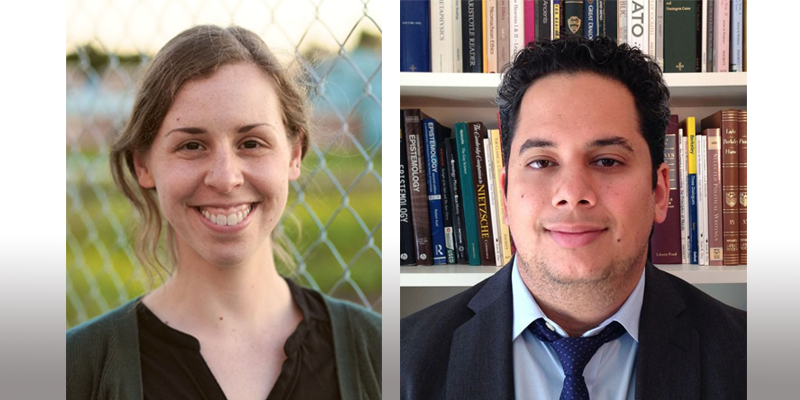
from left: Rachel Rudolph and Elay Shech
Categories: Advanced Systems, Cyber, Security, Education, Liberal Arts
Industrial and systems engineering assistant professor earns NSF CAREER Award for AM fatigue life prediction through deep learning
Four years ago, GE Aerospace transitioned to using additive manufacturing (AM) for their new Catalyst turboprop engine. Which meant that 800 traditionally manufactured components were consolidated into just 12 metal AM parts, the development cycle was dropped from 5-10 years to only two, the engine weight reduced by 5% and the fuel consumption improved by 1%. For G.E., that's a pretty big deal. If other U.S. aircraft manufacturers went the same route, that would be a pretty big deal for the planet.
There's a reason AM research across the globe is expected to push $24 billion by 2027, and the revolutionary impact on the aviation industry is one of them. Experts estimate that substantial adoption of 3D-printed parts could knock 200 million gallons off of annual aviation fuel consumption.
If the parts work.
Despite the demonstrated success of metal additive manufacturing in various industries, the performance uncertainty of AM parts undermines the potential of deploying AM for high-consequence applications. Air travel. Space travel. Those sorts of thing.
Which is why the National Science Foundation (NSF) is turning to assistant industrial and systems engineering professor Peter Liu in the form of a $500,000 CAREER Award meant to generate new insight into defect formation relevant to fatigue performance of parts manufactured through laser powder-bed fusion (LPBF) and uncover the synergistic impacts of multi-scale factors on fatigue fractures.
Liu hopes the five-year project, Deep Learning to Understand Fatigue Performance and Processing Relationship of Complex Parts by Additive Manufacturing for High-consequence Applications, "will establish a physics-centric, machine learning framework for fatigue life predictions, serving as a technological foundation for future metal AM production of dynamic load-bearing applications and establishment of a resilient and reconfigurable supply chain, and thus, enhance the competitiveness of U.S. industry.”
"The biggest challenges in fatigue performance assessment for LPBF parts come from the nonhomogeneous microstructural traits from process dynamics, coupled with their complex geometry and imposed multiaxial loading," he said. "Current fatigue performance assessment methods and tests are unable to take all these contributing factors into account."
Liu believes the best way to address those challenges is to combine fracture mechanics, finite element (FE) methods and novel data-driven models.
"The goal of this early career effort is to understand fatigue failures of complex LPBF parts under multiaxial loading for data-driven fatigue life predictions," he said. "The research will investigate the nature of fatigue failures from plastic deformation and crack initiation at the highest stress concentrations and translate fatigue life predictions into evaluating the crack growth at the vulnerable zones using a multiscale approach. Then we will develop new statistical models and a novel multiscale multifactorial deep learning model to incorporate crack growth and stress distribution to understand their impacts on fatigue performance and predict fatigue life."
Liu is also the principal investigator on another recent NSF project aimed at applying deep learning to AM development.
"My research passion is synergizing machine learning and fundamental process physics to advance manufacturing knowledge, efficiency, and capability of LPBF," Liu said. "I am extremely grateful to the support from my department, the college, the National Center for Additive Manufacturing Excellence (NCAME), the Interdisciplinary Center for Advanced Manufacturing Systems (ICAMS) and the AI@AU Initiative. This CAREER project aligns with one of the strategic areas of research in advanced manufacturing and materials at the Samuel Ginn College of Engineering. It will contribute to the leading research and education capabilities in advanced manufacturing at Auburn, accelerate AI applications in manufacturing, and increase interdisciplinary collaboration at Auburn."
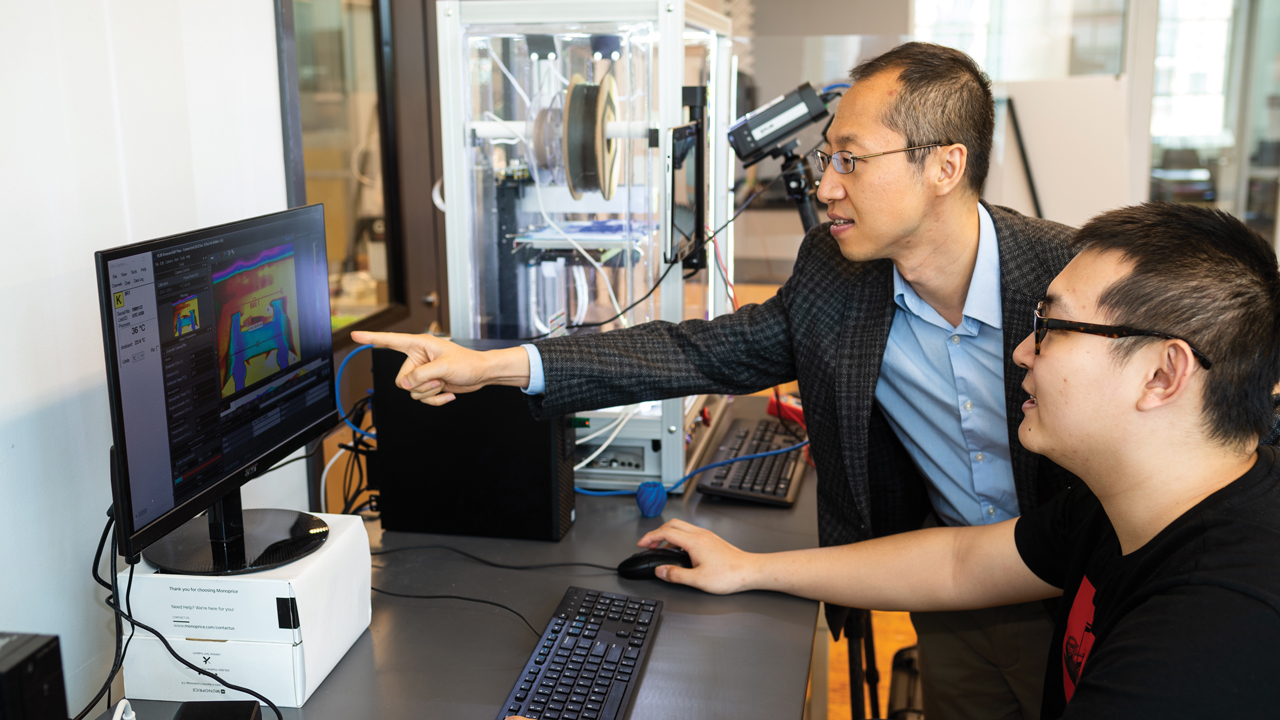
Peter Liu, left, recently received an NSF CAREER award to support his research into deep learning's application in predicting fatigue performance in additive manufacturing.
Categories: Advanced Systems, Transportation, Engineering, Manufacturing
Auburn University signs memorandum of understanding with KITECH to expand research efforts
Auburn University President Christopher B. Roberts signed a memorandum of understanding, or MOU, on Tuesday, Dec. 6, with Nak Kyu Lee, president of the Korea Institute of Technology, or KITECH, that will expand upon the collaborative research efforts of Auburn’s faculty and laboratories with local companies supported by KITECH.
Building on the signed MOU between the organizations in 2015, this newly expanded agreement includes the establishment of research and/or automotive technology support offices and laboratories, the creation of joint research projects and the exchange of technical information, periodic training symposia and consulting.
“As a land-grant university, Auburn aspires to deliver real-world, practical solutions,” Roberts said while addressing administrators and dignitaries at the ceremonial event held at The Hotel at Auburn University and Dixon Conference Center. “Through joint research efforts and projects, we can anticipate and meet the distinct needs of the automotive manufacturers and suppliers along the I-85 corridor that have strongly impacted our region’s economic climate. This partnership demonstrates an interchange of education, research and service, with global implications.”
The agreement spelled out a number of desired outcomes:
-
Establishment of research and/or automotive technology support offices and laboratories
-
Exchange of scientific/technical research materials, publications, information and advice
-
Development of mutually agreed-upon collaborative research projects
-
Identification of technical barriers encountered and improvement needed by manufacturers
-
Provision of technical solutions using means and technologies available at both institutions
-
Creation of joint research projects to identify funding opportunities through governmental agencies; and
-
Organization of periodic symposia on manufacturing technologies and related subjects
As identified by Roberts, the I-85 corridor remains a hotbed for automobile suppliers. KIA’s 2,200-acre plant in nearby West Point, Georgia, produces more than 300,000 automobiles per year. Hyundai’s 3.4 billion-square-foot plant just south of Montgomery, Alabama, is capable of producing nearly 400,000 vehicles per year.
“The Auburn-Opelika metropolitan area is an optimal region for joint research between academia and industry in the automobile field,” said Lee, whose institution is an application-oriented research institute founded with the mission to support the industry sector, especially the innovation of small- to mid-sized enterprises. “We plan to embark on joint research with Auburn University on innovative manufacturing technology. We also plan to answer to the demands of parts manufacturers in the region by utilizing the infrastructure and other means available at both institutions.”
Auburn University Outreach will manage the current initiative and coordinate the details of the memorandum of understanding. Since 2015, the Office of Professional and Continuing Education, a unit of University Outreach, and the Samuel Ginn College of Engineering have worked closely with KITECH on projects, including the “Korea US Automotive Technology Workshop” and various technology support and research projects.
“It is a great pleasure to not only continue this collaborative endeavor, but to expand upon it for the betterment of our stakeholders, community members and economic outlook,” said Royrickers Cook, Auburn University vice president for University Outreach and associate provost. The relationship between Auburn University and KITECH is longstanding, and we in University Outreach and the Office of Professional and Continuing Education are proud to be a part of this impactful collaboration.
“As we embark upon emerging electronic vehicle technologies, the expanded partnership positions each of us at the forefront of innovation, technological research and the promotion of economic development in the state of Alabama and beyond. KITECH’s values align well with Auburn’s land-grant mission of Outreach and help us carry out our responsibility to transform research into services that meet our communities’ most critical needs.”
Auburn University, recognized as a Carnegie R1 research institution, continues to cultivate the growing role that research and collaboration has played in improving business practices, finding new solutions to old problems and improving the quality of lives for thousands.
“In addition to advancing Auburn’s land-grant mission, this partnership demonstrates the value of strategic international and institutional engagements to the economic development of our state,” said Jim Weyhenmeyer, vice president for research and economic development. “Through this partnership with KITECH, we will continue strengthening Auburn’s capacity to lead automotive technology research and development, particularly in the global market.”
In the spirit of intellectual symposia following the signing ceremony, Auburn University and KITECH thought leaders combined to produce the first “KITECH-Auburn University Manufacturing Innovation Technology Forum.”
Larry Rilett, director of the Auburn University Transportation Research Institute within the Samuel Ginn College of Engineering, discussed “Opportunities and Challenges for Electric Vehicle Adoption: The Alabama Perspective.”
Mark Hoffman, assistant professor of mechanical engineering in the Samuel Ginn College of Engineering, discussed “Mobile Industry Status and Challenges.”
Flexing KITECH’s academic muscle, KITECH’s Sungwook Kang presented “Friction Stir Welding for EV Parts Manufacturing.”
Rilett, Hoffman and Kang were then joined by Dong Woo “Daniel” Yu, assistant director of Outreach Programs within the Office of Professional and Continuing Education for a 35-minute panel discussion.
Yu will coordinate details of the joint efforts between KITECH and Auburn University.
“Since the initial agreement was signed in 2015, I’ve been able to work with many Korean manufacturers to assess their technical problems, needs and provide training,” said Yu. “Having the opportunity to extend the resources from both Auburn University and KITECH has allowed us to assist several manufacturers. We’ll continue these joints efforts on a broader scope as we move forward, especially in the areas of emerging EV production technologies.”
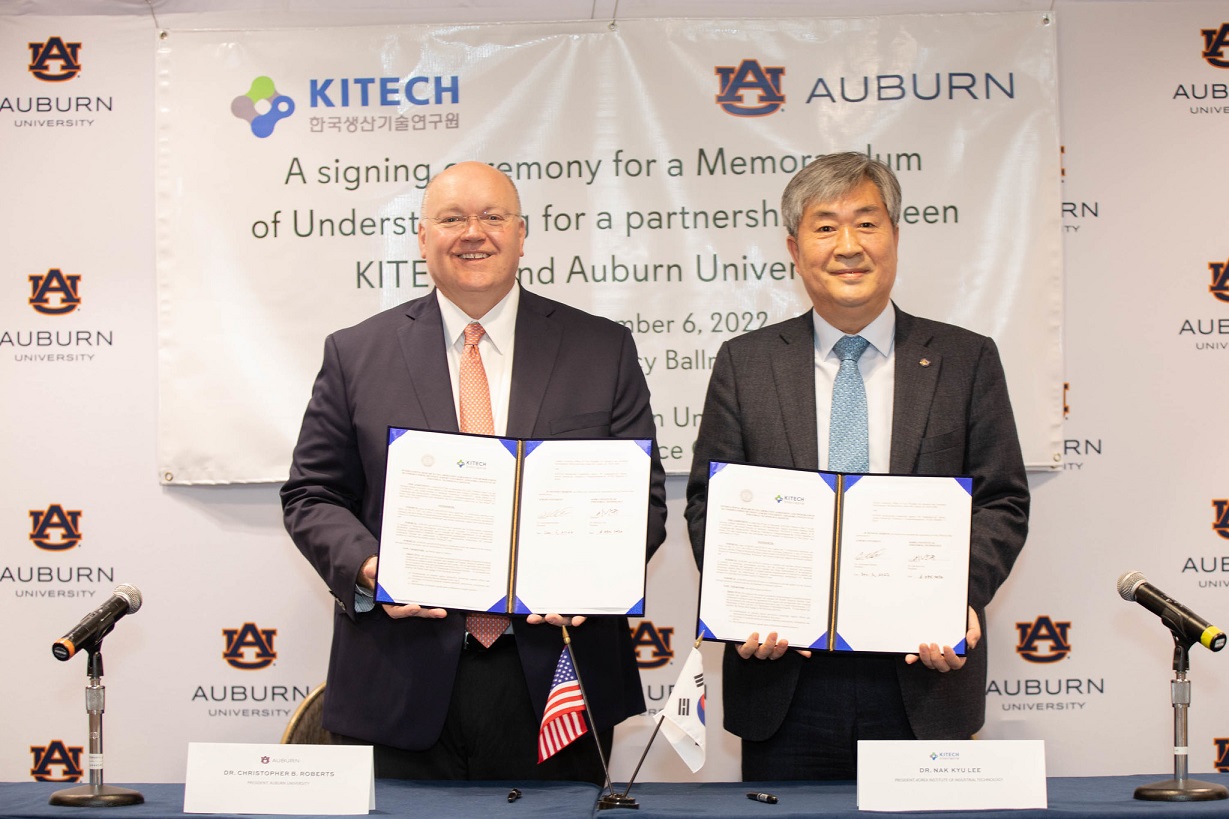
Auburn University President Christopher B. Roberts, left, signed a memorandum of understanding on Tuesday, Dec. 6, with Nak Kyu Lee, president of the Korea Institute of Technology, that will expand upon the collaborative research efforts of Auburn’s faculty and laboratories with local companies supported by KITECH.
Categories: Advanced Systems, Transportation, External Engagement, Manufacturing
NIST awards Auburn nearly $1M to lead NDE-based additive manufacturing qualification via data analytics
The National Institute of Standards and Technology (NIST) recently awarded Auburn University's National Center for Additive Manufacturing Excellence (NCAME) and the ASTM Additive Manufacturing Center of Excellence (AM CoE) nearly $1 million to establish through computer vision and machine learning a data-driven framework for the non-destructive qualification of additively manufactured materials and parts for mission critical applications.
The framework will allow for the rapid identification of critical defects and the prediction of fatigue performance with non-destructive evaluation (NDE) data.
"Additive manufacturing (AM) has gained significant attention from key industrial sectors including aerospace, defense, automotive, and medical due to its unique capability of fabricating customized parts with complex geometries on demand," said NCAME director Nima Shamsaei, Philpott-WestPoint Stevens Distinguished Professor of mechanical engineering. "However, current AM platforms are still prone to producing parts with varying degrees of defects detrimental to the parts’ structural integrity, specifically in fatigue critical applications."
NDE-based and prediction-based qualifications are key to expedited adoption of AM, said Shuai Shao, associate mechanical engineering professor.
"Conventional qualification approaches are challenging when directly applied to AM due to the parts' defect content being sensitive to many process parameters," Shao said.
Shamsaei is the project's principal investigator (PI). Co-PIs from Auburn are Shao and assistant industrial and systems professor Peter Liu; Co-PIs from ASTM International are Mohsen Seifi, Mahdi Jamshidinia and Aaron McCandless .
"Extracting defect features with computer vision and correlating them with fatigue performance using machine learning, are the main ingredient of the proposed NDE-based qualification framework." Liu said.
Established in 2017 through a public-private partnership between Auburn and NASA, NCAME has built one of the world's most robust environments for framework-based analysis of fatigue performance towards qualification and certification of additively manufactured materials and parts. For example, NCAME has been conducting research for the Federal Aviation Administration (FAA) on matters affecting the AM qualification and certification, specifically in fatigue-critical applications.
This most recent award reflects NIST's continuing efforts to address barriers to AM adoption through measurement science supporting equivalence-based qualification and model-based qualification, the characterization of materials, and standards to support consistent data exchange and characterize new advances in AM production systems.
Over the course of the two-year project, NCAME and ASTM AM CoE researchers will also work with NIST scientists to explore ways to incorporate their findings into data management systems like NIST’s Additive Manufacturing Materials Database (AMMD) as well as potential pathways for standardization needs.
"Research need in this area is extremely timely and important," said Seifi, ASTM International’s vice president of Global Advanced Manufacturing.
Formed in 2018, the ASTM AM CoE aims to accelerate the development and adoption of AM by supporting standardization, developing training and certification programs, and providing market intelligence, business strategy and advisory services.
"The goal of this NIST funded project is well-aligned with the mission of the newly established AM CoE Consortium for Materials Data and Standardization (CMDS) with members representing the entire AM value chain," Seifi said.
Media Contact: Jeremy Henderson, jdh0123@auburn.edu, 334-844-3591
BY JEREMY HENDERSON
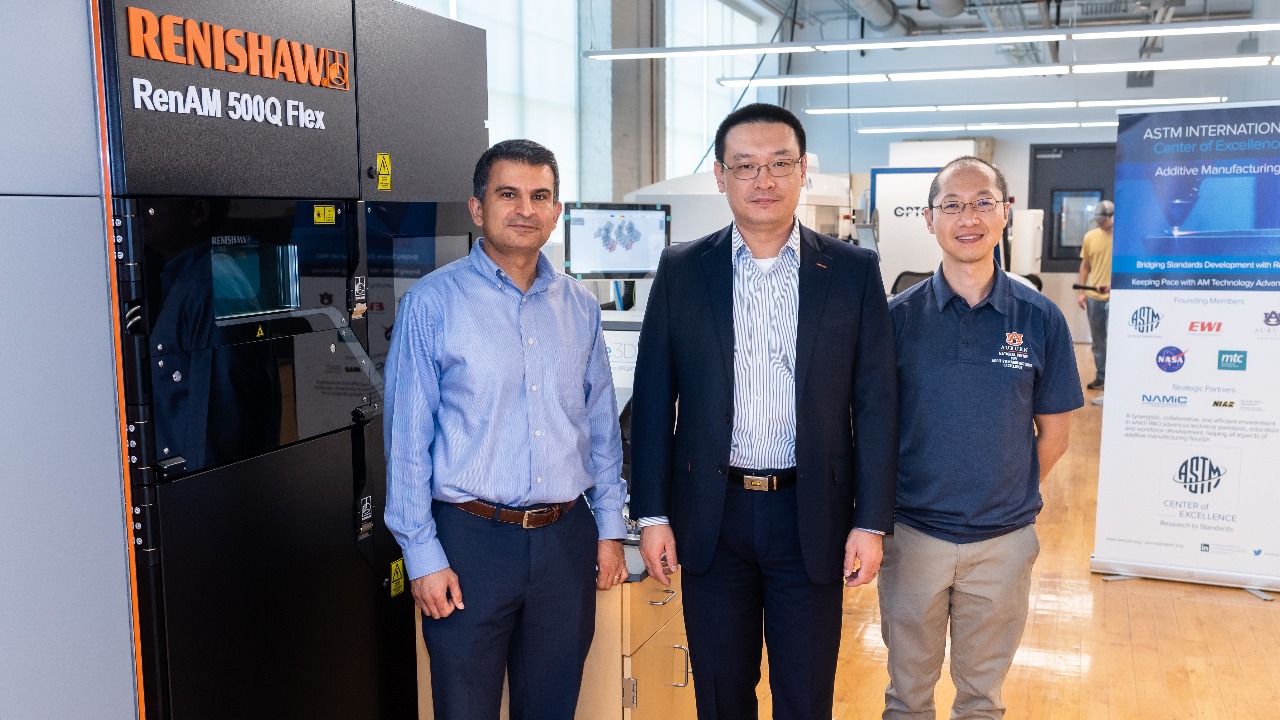
Nima Shamsaei, Shuai Shao and Peter Liu
Categories: Advanced Systems, Engineering, Manufacturing
Army invests $4.3 million in Auburn University additive manufacturing research
The U.S. Army has asked Auburn University to help build the future of American combat readiness.
Through a recent $4.3 million Army grant, the National Center for Additive Manufacturing Excellence (NCAME) at Auburn University will soon initiate a two-year project focused on materials, parts and process qualification, all of which are necessary for furthering the adoption and implementation of additive manufacturing in Army operations.
"Material variation is what I call the ‘Achilles heel’ of additive manufacturing," said NCAME director and project principal investigator Nima Shamsaei, Philpott-WestPoint Stevens Distinguished Professor of mechanical engineering. "It can make the qualification and certification of additively manufactured materials and parts challenging."
Even more challenging, Shamsaei said, is ensuring the consistency and transferability of process output among different additive manufacturing machines, a project goal that NCAME researchers hope to achieve not only with exhaustive mechanical testing but with AI — machine learning, specifically.
"Machine learning will help us establish structure-property relationships in a much more comprehensive way, which is somewhat transferable among platforms," said co-principal investigator and assistant mechanical engineering professor Elham Mirkoohi.
Shamsaei says Mirkoohi’s experience in AI and machine learning applications for additive manufacturing is the newest addition to NCAME’s research repertoire, which continues to draw high-profile government research grants.
"Simulation and machine learning are effective tools to understand the role of microstructure and defects on mechanical properties,” said co-principal investigator Shuai Shao, associate professor of mechanical engineering.
That understanding can help establish equivalency with less need for extensive experimentation, Shao said.
"This project not only looks into innovative ways to generate materials data, but also emphasizes on transferring the knowledge among different additive platforms by means of establishing equivalency," said co-principal investigator Masoud Mahjouri-Samani, assistant professor of electrical and computer engineering.
Aaron LaLonde, who as technical specialist for the U.S. Army DEVCOM Ground Vehicle Systems Center, helped facilitate the Army grant, believes the project will be crucial for further integrating AM into the Army’s modernization and sustainment efforts.
"NCAME,” LaLonde said, “has become one of the main key players in additive research along these lines.”
His comments echo those of Maj. Gen. Darren L. Werner, commanding general of the U.S. Army Tank-automotive and Armaments Command (TACOM), during the Army Additive Manufacturing Summit hosted by the Samuel Ginn College of Engineering last June.
"The research being conducted here at Auburn is important to the Army because additive manufacturing is going to provide two different capabilities," Werner said. "It's going to give us capability in our organic industrial base to integrate advanced manufacturing techniques, and it's also going to provide deployability of advanced manufacturing that we can potentially move into a forward location to produce and repair parts for our combat systems."
Established in 2017 through a public-private partnership between Auburn and NASA, NCAME is also one of the founding partners of the ASTM International Additive Manufacturing Center of Excellence (ASTM AM CoE), which aims to close additive manufacturing standards and workforce gaps.
The FAA also recently awarded NCAME $6 million for research toward improving commercial air travel through the use of additively manufactured metal components focused on a commonly used materials in aviation and space, titanium alloys.
Media Contact: Jeremy Henderson, jdh0123@auburn.edu, 334-844-2224
BY JEREMY HENDERSON
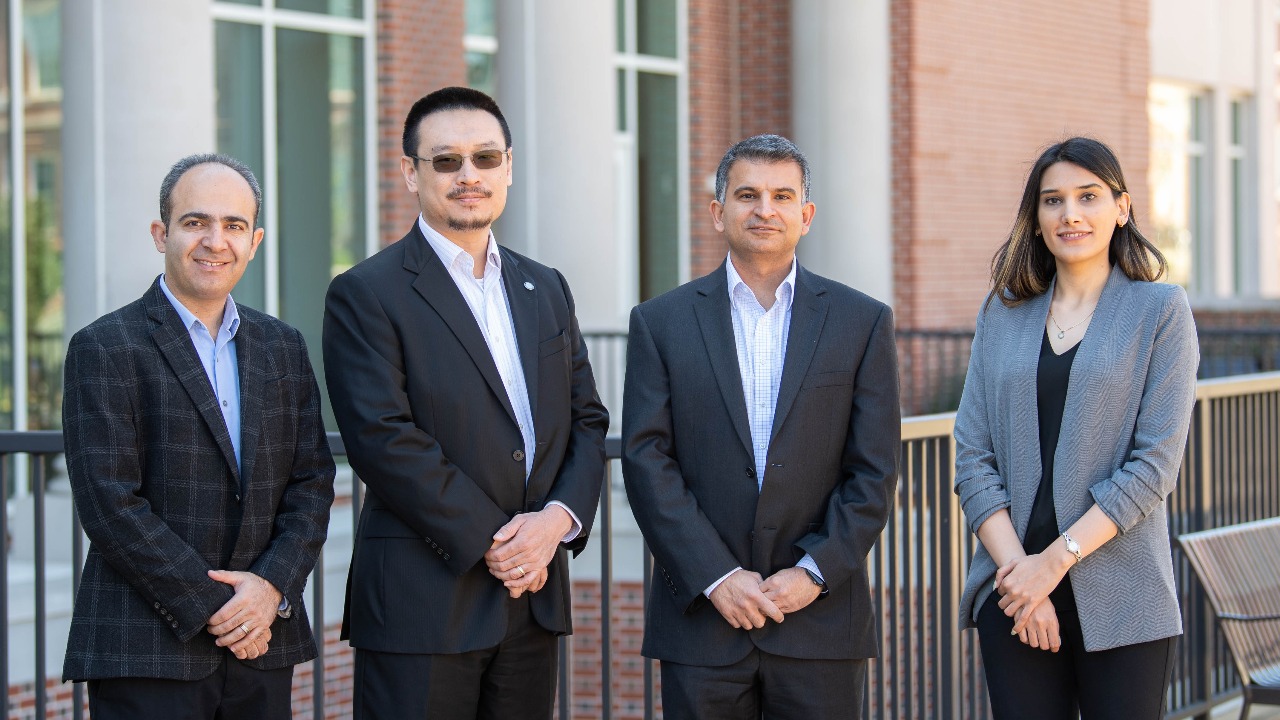
Co-principal investigators, pictured from left to right, are professors Masoud Mahjouri-Samani, Shuai Shao, Nima Shamsaei and Elham Mirkoohi.
Categories: Advanced Systems, Engineering, Manufacturing
Auburn University ranks among top U.S. research institutions in National Science Foundation survey
Auburn University is ranked in the top 11% of U.S. research institutions, coming in at No. 100 among 915 universities, according to the National Science Foundation’s recent Higher Education Research and Development, or HERD, Survey. Among public universities, Auburn is ranked No. 67 out of 415 institutions.
“Auburn’s ranking among the nation’s top 100 research institutions is a significant accomplishment,” said James Weyhenmeyer, Auburn vice president for Research and Economic Development. “Our innovative researchers have remained committed to engaging in impactful research even during the challenges of a global pandemic. Their dedication and ingenuity are reflected in Auburn’s rise in the rankings.”
The annual survey, compiled from fiscal year 2020 research expenditures, saw Auburn climb five spots from the previous year.
During the five-year period of 2016-20, Auburn’s annual research expenditures increased from $152.4 million to $255.3 million, resulting in a rankings jump of 26 places. Among Southeastern Conference universities, Auburn had the highest percentage increase in research expenditures over that time period: a jump of 67.5%.
For universities without a medical school, Auburn ranked No. 61 nationally and No. 1 in the state. Auburn also was highly ranked nationally in a number of specific fields of research, including No. 54 in engineering, No. 54 in mathematics and statistics and No. 93 in physical sciences, all tops in the state.
A hallmark of Auburn’s research is the diversity of its funded projects. Highlights include:
- The Samuel Ginn College of Engineering’s National Center for Additive Manufacturing Excellence is working with NASA under a $14.6 million contract to develop additive manufacturing processes for improving the performance of liquid rocket engines. The center also is using $6 million from the Federal Aviation Administration to advance the use of additive manufacturing in commercial aviation.
- The state of Alabama recently awarded Auburn $1.6 million for four sustainability projects: advanced jet and diesel fuels from woody biomass grown in the state and from waste plastics; biotechnology that enables conversion of organic wastes into bioplastics; 3D printable polymer smart machines, such as actuators, sensors and energy harvesters; and a new, high-value aquaculture feed binder made from soybean hulls.
- The National Institutes of Health recently awarded Auburn a $1.5 million Research Training Initiative for Student Enhancement grant to broaden participation in the sciences for traditionally underrepresented students.
In addition to the high ranking in the NSF HERD Survey, Auburn is recognized by the Carnegie Classification of Institutions of Higher Education as a top-level, or R1, university with “very high research activity.”
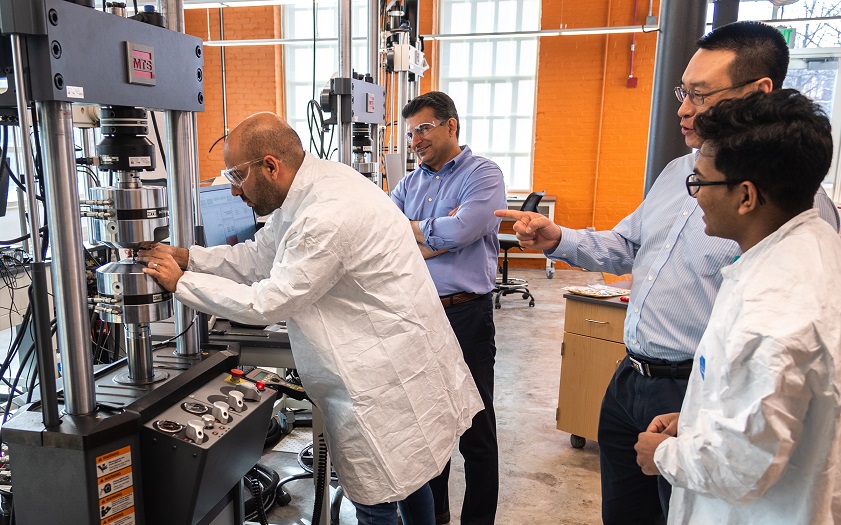
Auburn University is ranked in the top 11% of U.S. research institutions, coming in at No. 100 among 915 universities, according to the National Science Foundation’s recent Higher Education Research and Development, or HERD, Survey. Pictured, scientists in Auburn’s National Center for Additive Manufacturing Excellence conduct fatigue testing on an additively manufactured part.
Categories: Advanced Systems, Energy & the Environment, Engineering, Auburn In the News, Manufacturing, Agriculture
Interdisciplinary research team receives NSF grant to develop waste-reducing, biodegradable paper electronics
Current electronics and electronics device printing technologies rely on wet processes such as screen or inkjet printing that require extensive development of inks or solutions with limited sources of functional materials. These inks are often impure, incompatible with biodegradable paper substrates, and printed on eco-unfriendly plastics leading to a huge amount of electronic waste (or E-waste).
Masoud Mahjouri-Samani, the principal investigator and assistant professor in electrical and computer engineering, and a team of scientists representing multi-disciplinary units and centers from Auburn University were awarded a $499,940 grant by the National Science Foundation for their project, “Multi-material Manufacturing of Eco-Friendly and Biodegradable Paper-Based Flexible Hybrid Electronics.”
Co-principal investigators are Shuai Shao, associate professor in mechanical engineering, Nima Shamsaei, Philpott-WestPoint Stevens Distinguished Professor in mechanical engineering and Director of the National Center for Additive Manufacturing Excellence (NCAME), and Michael C. Hamilton, James B. Davis Professor in electrical and computer engineering and director of the Alabama Micro/Nano Science and Technology Center (AMNSTC).
“The team’s extensive expertise in theory and computation, additive manufacturing, mechanical reliability, and micro/nanoelectronics, not only guarantees the success of this research but also opens up a new opportunity for future collaborative activities,” said Shao.
Hamilton believes the infrastructure is well suited for such research activities. “The AMNSTC provides valuable scientific and technical expertise as well as international visibility to this work,” he added. “AMNSTC also provides access to a wide variety of electronic device fabrication and characterization instrumentation that allows us to test the functionality of our printed devices.”
“We are definitely excited about this interdisciplinary research activity among the NCAME, AMNSTC, as well as the departments of Electrical and Computer Engineering and Mechanical Engineering at Auburn University,” said Shamsaei. “At NCAME, most of our capabilities lie in fabricating metallic materials with micro-level accuracy. This research is not only a new addition to the center’s activity and field of additive manufacturing but also can potentially grow into a new field of Functional Additive Nanomanufacturing here at Auburn.”
The team’s research demonstrates a transformative dry additive nanomanufacturing approach that enables the printing of eco-friendly papertronics. Currently, substrates in use are made of polymers, which never decompose.
“What are you going to do with those products, many of which are designed for specific short-term tasks such as smart package labeling and sensors, once you have used them?” Mahjouri-Samani asked. “Throw them away, right? But, again, they don’t decompose. They aren’t biodegradable because they aren’t printed on biodegradable substrates such as paper. We can help prevent a huge waste problem.”
How can electronics and sensors be printed on biodegradable papers? The team has that answer, too.
“We have designed and developed the first printer in the world that can print on any substrate,” said Mahjouri-Samani, who dubbed this creation an “additive nanomanufacturing printer.”
This printing method is based on what he deems an “in-situ and on-demand” generation of nanoparticles by pulsed laser ablation of target materials at atmospheric pressure and at room temperature. These nanoparticles flow out of a nozzle creating a stream of nanoparticles. A substrate is then placed under the nozzle on a programmable X-Y-Z stage where these nanoparticles can be laser sintered (compacted into a solid mass) and crystallized in real-time to form desired patterns and devices.
“Overall, our additive nanomanufacturing process is capable of printing a wide range of dry, contamination-free, multi-layered, and intrinsically pure structures,” he added. “This approach also offers the flexibility of printing onto different types of substrates, including metals, ceramics, plastics, paper and flexible substrates such as thermoplastic polymers.”
Mahjouri-Samani said the primary purpose of this research effort is “to make a positive impact on humanity. We want planet Earth to be as clean as possible for this generation, and generations to follow,” he added. “If we can develop another way to reduce waste, then we are making a positive difference.”
Media Contact: Joe McAdory, jem0040@auburn.edu, 334.844.3447
BY JOE McADORY
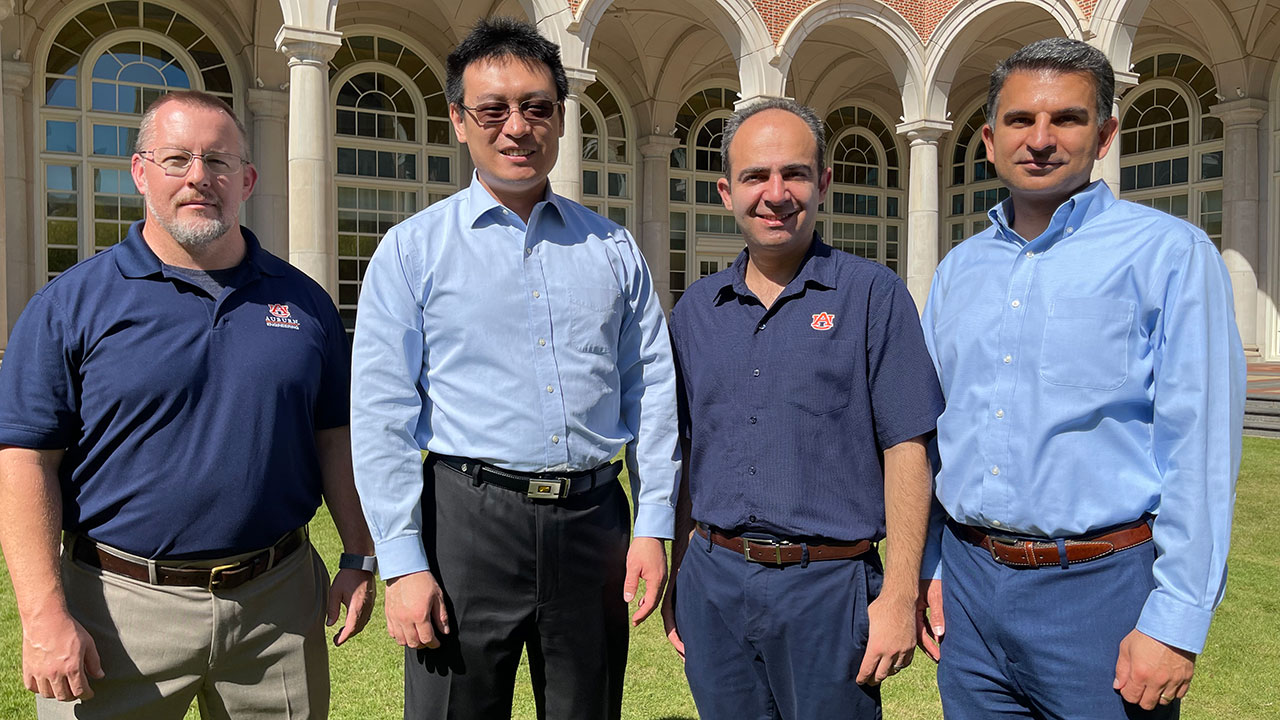
From the left: Michael C. Hamilton, Shuai Shao, Masoud Mahjouri-Samani and Nima Shamsaei.
Categories: Advanced Systems, Engineering, Manufacturing
Auburn to expand Industry 4.0 research, education, training and innovation capabilities with $7.2M DoD award
The Interdisciplinary Center for Advanced Manufacturing Systems (ICAMS) at Auburn University is the recipient of a $7.2 million award from the Department of Defense’s (DoD) Office of Industrial Policy’s Industrial Base Analysis and Sustainment (IBAS) Program to encourage small and medium-sized manufacturers to adopt the advanced technologies associated with Industry 4.0, or smart manufacturing. The award will allow the center to increase efforts to improve the skills of the next generation of engineers and the existing workforce to take full advantage of those technologies in their operations.
“With this award, we are building upon our original mission and expanding our research and services in key areas,” said Gregory Harris, ICAMS director and associate professor in the Samuel Ginn College of Engineering's Department of Industrial and Systems Engineering.
Gregory Purdy, assistant professor of industrial and systems engineering, is a co-principal investigator on the award and an ICAMS collaborating faculty member. He explained that one new focus of the funding will be devoted to the creation of the nation’s first cyber-physical manufacturing range (CpMR) housed on a university campus. The CpMR will provide a testbed to research, test, demonstrate and teach the technologies and processes to significantly improve technology adoption in small and medium-sized manufacturers and overcome the fear of malicious cyber activity in their systems.
“Industry 4.0 driven manufacturing environments are a collection of different equipment and technologies that increase the potential attack surface for malicious cyberattacks,” Purdy explained. “We are trying to understand what vulnerabilities exist in these systems and the potential impacts of a cyberattack on both the process and resulting part. However, it is not feasible to simulate attacks on a production resource that is used day-in and day-out.”
The CpMR solves this dilemma by incorporating modern manufacturing technologies in an Industry 4.0 ecosystem with current generation automation, thereby allowing a safe environment for testing and evaluating malicious cyber activity in an Industry 4.0 smart manufacturing platform.
“It allows students, researchers and other professionals to execute attacks and see what the outcome is in a state-of-the-art machining cell,” Purdy said. “I could unleash the most potent and sophisticated attack that I have and completely make everything go haywire, without endangering a key production resource.”
The new funding will also support the purchase of additional manufacturing equipment to further develop an Industry 4.0 manufacturing environment, including the creation of a digital manufacturing demonstration cell. The manufacturing and metrology cell will demonstrate the full digital manufacturing process flow starting by automatically scanning a subject and creating a point cloud from the 3D scan that is converted into a solid model. This model will be sent to a vertical machining center that will produce the part. A robotic arm will remove the part from the mill and deliver it to a coordinate measurement machine. The automated inspection process will then confirm the part matches the reference design. The digital manufacturing demonstration cell will be able to continuously run a product and show the capability of the connected enterprise.
“This additional equipment is going to make us more capable and allow us the ability to better showcase digital manufacturing demonstrations on site,” Harris explained. “We can show that this artifact can go all the way from design through production with little to no human intervention, really highlighting digital manufacturing capabilities. Manufacturers will be able to relate to that and say, ‘if they can do that with this artifact, I can envision what I’m trying to do using this technology.’”
According to Harris, another of those key areas of service is a “Path to the Plains” partnership with Southern Union State Community College (SU), where SU students can take Auburn University courses while completing their associate degree. The partnership also outlines a plan for a graduate certificate in advanced manufacturing and an advanced manufacturing minor. Additionally, any Auburn undergraduate student will be able to obtain a certificate in mechatronics through the partnership with SU. Participating students will be assisted by scholarships to support their educational success.
“The ability at ICAMS to create tailored programs upon request from industry allows local industries to adapt to changing industry trends much more easily using existing personnel,” said Lewis Payton, ICAMS associate director and professor of practice in the Department of Industrial and Systems Engineering. “Auburn students in the new manufacturing minor will also be graduating with hands-on experience using industrial grade equipment. ICAMS is poised to become the premier fabrication and teaching laboratory in the Southeast, including future expansion into the area of die fabrication and repair.”
Other ICAMS services that will be introduced or enhanced with this recent award include:
- An annual call for undergraduate and graduate research proposals to be evaluated and awarded to those that expand the demonstration, education training and research capabilities of ICAMS.
- Research into inspection technologies to understand how to provide real-time quality data as feedback to adjust equipment controls to continuously improve control limits and reduce the possibility of a defective product.
- The creation of a smart cyber-physical sensing, modeling and control digital twin infrastructure with augmented and mixed reality.
- The extension of annual survey research for three additional years, for a total of a five-year study into technology adoption amid small and medium-sized manufacturers.
“ICAMS represents a major, transformational change in the areas of outreach, innovation and education at Auburn University,” Payton said. “By early in 2022, ICAMS will be the most capable prototyping laboratory within the state of Alabama for innovation, creating a unique opportunity for companies and for student design teams across the campus.”
Adele Ratcliff, director of the DoD IBAS program which is funding the effort, commended the ICAMS project’s goal of reducing the barriers against Industry 4.0 technologies being implemented in small and medium manufacturing company operations.
“The ICAMS comprehensive approach of providing technical support, project planning, skilled workers and a way to test new technology’s real-life impact on production flows is a forward-leaning model that has been proven to overcome technology-adoption hesitancy in companies of all sizes,” Ratcliff said. “Larger manufacturers have the resources to fund these risk reduction activities on their own. By partnering with small and medium manufacturers, ICAMS allows these companies to have confidence that their technology implementation projects will provide valuable process and capability improvements with limited operational risk.”
ICAMS, which launched in 2018, has formed and strengthened relationships with the city of Auburn Industrial Development Board and the Alabama Community College System. Through these relationships, ICAMS has doubled its facility footprint from 10,000 square-feet to 20,000 square-feet, providing adequate space for its dedicated operations, and utilized the space to educate and train students and industry personnel to use the advanced manufacturing technologies and capabilities to benefit the DoD and its supporting manufacturing sector.
Media Contact: Cassie Montgomery, cmontgomery@auburn.edu, 334.844.3668
BY CASSIE MONTGOMERY
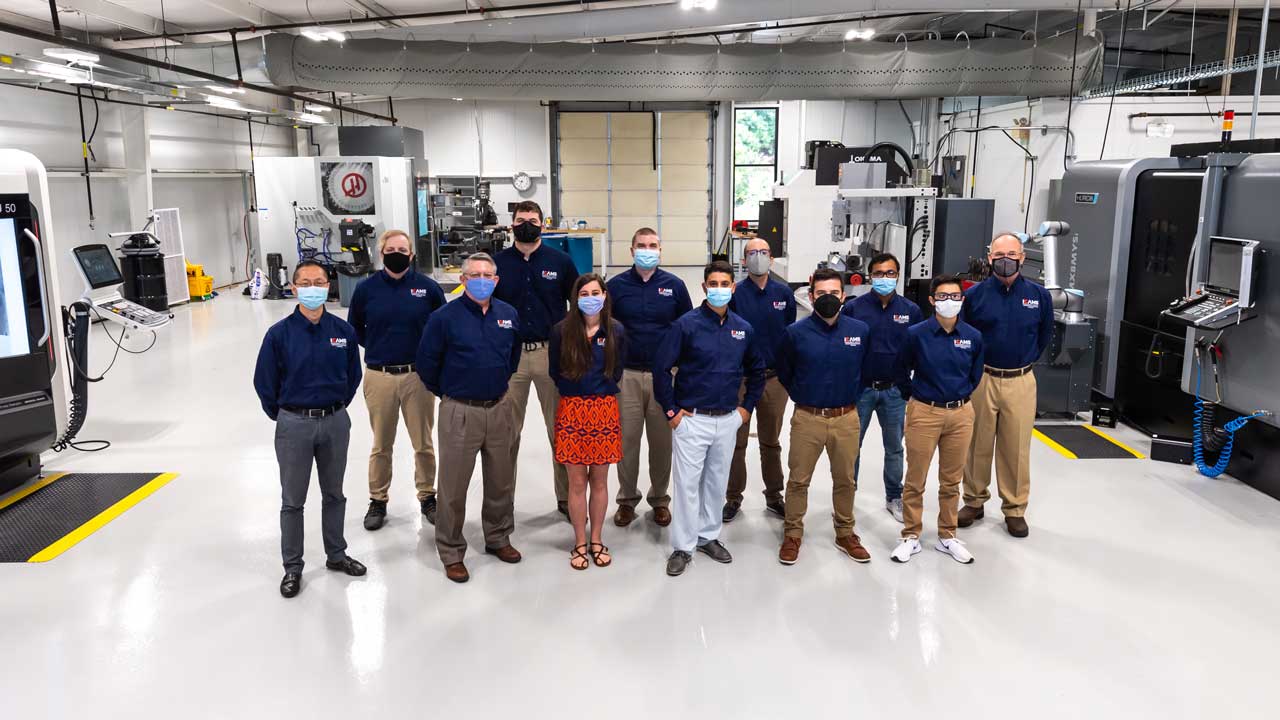
ICAMS collaborating faculty members and graduate students.
Categories: Advanced Systems, Engineering, Manufacturing
Research to revolutionize wireless engineering earns $320,000 grant
Recent advances in deep learning stimulated a wave of research that were applied to various problems within wireless communications and networking.
However, the wireless research community has not addressed one of the critical challenges in this arena – how to facilitate the acquisition of sufficient data in order to train and validate complex learning models.
Shiwen Mao, professor and Earl C. Williams Eminent Scholar in Electrical and Computer Engineering, hopes to bridge this gap.
Mao’s work, “Data Augmentation and Adaptive Learning for Next Generation Wireless Spectrum Systems,” was awarded $320,000 by the National Science Foundation in hopes of devising innovative approaches that enable wireless researchers and practitioners to acquire data more efficiently, at a reduced cost and utilize existing data more effectively.
Mao is the principal investigator on a team that includes researchers from Temple University and California State University-Sacramento with total funding of $1.2 million.
Findings from this project are expected to fuel future breakthroughs in wireless technology research by making deep learning models more widely applicable.
“Machine learning has been very successful in many disciplines, but as wireless engineers, we want to bring machine learning in to address problems,” Mao said. “For example, how do you use the spectrum? How do you design wireless protocols for your cell phone, or home Wi-Fi, and make them more efficient? What we want to do is apply deep learning and artificial intelligence to address these spectrum-related problems.”
But for machines to learn, ever-elusive data must be captured. Preliminary investigations are making progress, however. The team used conditional generative adversarial network (CGAN) to augment the originally small dataset with new labeled data of the same distribution for automatic modulation recognition with a focus on real features on hardware and the impact of channels.
“Our preliminary study verifies that our proposed approach can effectively generate synthesized in-phase and quadrature (I/Q) data with the same distribution of the original data,” Mao added. “More importantly, our findings validate that the conditional generative adversarial network-based approach can generate high-quality and high-delivery data sets for different modulation schemes at different signal-to-noise levels.”
Mao, who has served at Auburn since 2006, is also director of the Wireless Engineering Research and Education Center.
“Earning an NSF medium grant is a very competitive process,” he added. “This award is a great recognition of our track record and past contributions.”
BY JOE McADORY
Media Contact: Joe McAdory, jem0040@auburn.edu, 334.844.3447
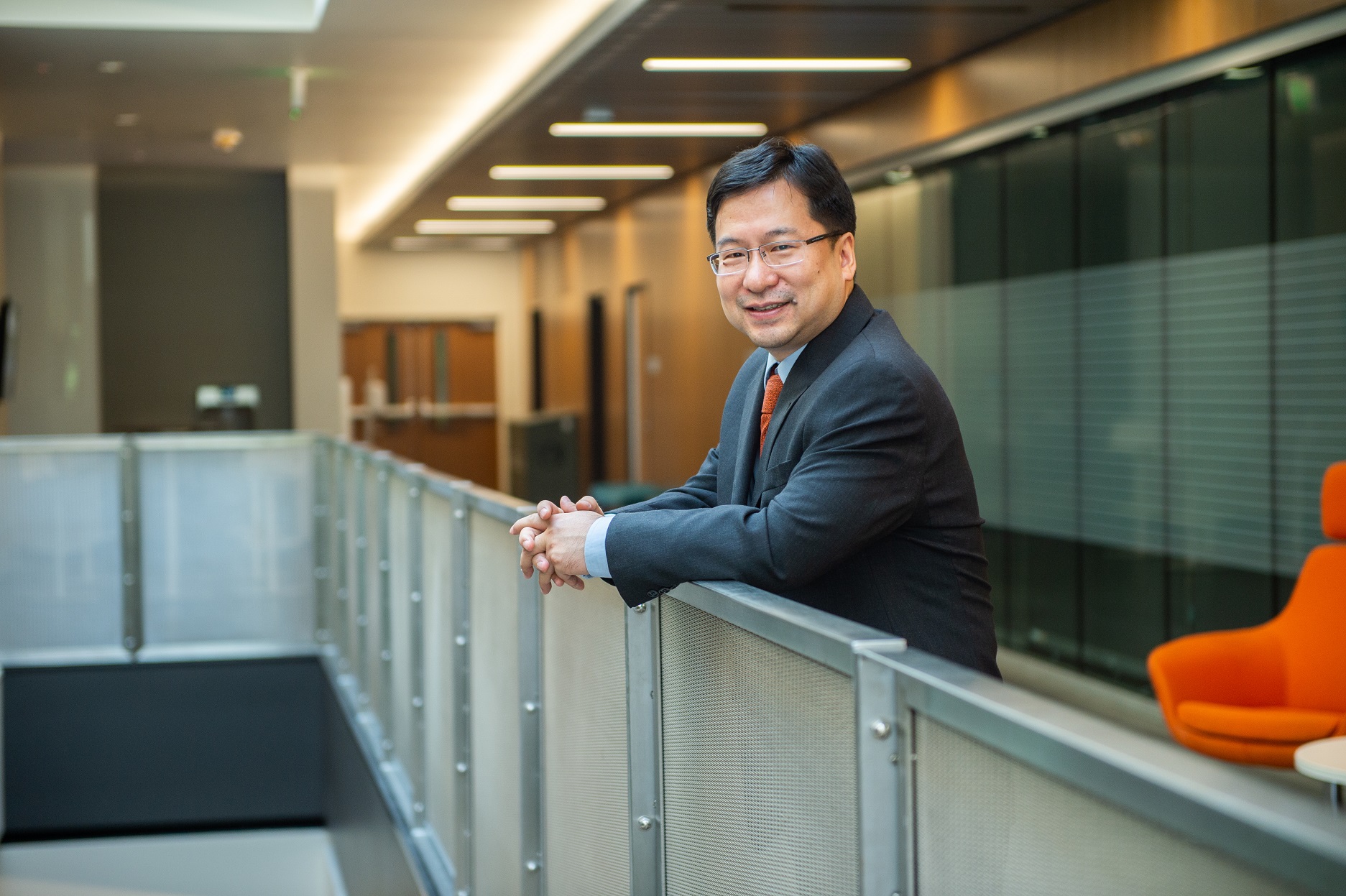
Shiwen Mao
Categories: Advanced Systems, Engineering
Study finds bundling RFID with electronic data interchange increases hospital efficiency, reduces expenses
The National Academy of Medicine estimated the U.S. healthcare system wastes an average of $765 billion per year on misplaced or expired supplies.
Research published in Production and Operations Management “The Joint Use of RFID and EDI: Implications for Hospital Performance,” which included authors Kang Bok Lee, EBSCO Associate Professor of Business Analytics at the Harbert College of Business at Auburn University, and Harbert College alum Randy V. Bradley, who is currently Associate Professor in Supply Chain Management at the Haslam College of Business at the University of Tennessee, reveals a key strategy for hospitals to track equipment and supplies and increase performance, while reducing personnel expenses and readmission rates.
Specifically, the research shows the bundling of radio frequency identification (RFID) with electronic data interchange (EDI) provides a streamlined, all-in-one, technological database that yields greater organizational efficiency. RFID is the use of radio-frequency identification methods to tag and track items while electronic data interchange enhances visibility and communication through the use of electronically transferring information between organizations.Research published in Production and Operations Management “The Joint Use of RFID and EDI: Implications for Hospital Performance,” which included authors Kang Bok Lee, EBSCO Associate Professor of Business Analytics at the Harbert College of Business at Auburn University, and Harbert College alum Randy V. Bradley, who is currently Associate Professor in Supply Chain Management at the Haslam College of Business at the University of Tennessee, reveals a key strategy for hospitals to track equipment and supplies and increase performance, while reducing personnel expenses and readmission rates.
The best way to understand the benefits is to picture the technologies as bookends around the revenue cycle. RFID sits at the front end, where it can be used to track supplies and equipment. The result is a clean record of resource utilization in care delivery, which is useful on the backend when hospitals transmit claims to government and private insurance payers via EDI.
After examining 3,300 hospitals nationwide, the researchers conducting this study realized RFID/EDI bundles that capture the utilization of supplies, resources, and equipment at the point of care both aids in inventory visibility and creates a clean data stream that facilitates more efficient billing of third parties.
With an organized inventory and streamlined billing process, researchers believe this not only improves an organization’s bottom line by reducing expenditures, but overall patient care as well. Ensuring supplies are readily available – not misplaced – and tracked in real time, facilitates faster diagnostics and ensures timely medical interventions. These factors increase both the efficiency and expediency in which care can be delivered.After examining 3,300 hospitals nationwide, the researchers conducting this study realized RFID/EDI bundles that capture the utilization of supplies, resources, and equipment at the point of care both aids in inventory visibility and creates a clean data stream that facilitates more efficient billing of third parties.
Value-Based Purchasing, a federal program, recently shifted hospital reimbursements to a value-based model, placing a stronger emphasis on healthcare facilities to accurately track and document resources/supplies used in the delivery of care with note that supplies are a hospital’s second-largest expense, accounting for 35 to 45 percent of their operating budget, according to researchers.
The results of the research also led the researchers to conclude hospital administrators should not take a slow, piecemeal, or phased in approach when utilizing RFID and EDI simultaneously. Instead, they should go all in. “We found that hospitals that use RFID alone, or EDI alone, perform worse than hospitals that have neither solution in place,” researchers wrote—but like many good things, the real savings come to those who successfully combine the technologies together for maximum benefit.
Other authors in this study included Terry Esper of Ohio State University, Joonhwan In of Ulsan National Institute of Science and Technology, Bogdan C. Bichescu of the University of Tennessee and Terry A. Byrd (Retired Bray Professor Emeritus) from the Harbert College.
Kang Bok Lee is EBSCO Associate Professor of Business Analytics within Harbert College’s Department of Systems and Technology. He has published in journals such as the Academy of Management, International Journal of Research in Marketing, Physica A and Strategic Management Journal.
Randy V. Bradley is an Associate Professor of Information Systems and Supply Chain Management in the Haslam College of Business at the University of Tennessee. He holds a Ph.D. in Management of Information Technology and Innovation, an M.S. in Management Information Systems, and a B.S. in Computer Engineering, all from Auburn University. As a supply chain and IT strategist and researcher, Bradley's expertise includes digital business transformation, supply chain digitalization, and the strategic application of business analytics and IT in the supply chain.
BY JOE MCADORY

from left: Kang Bok Lee and Randy Bradley
Categories: Advanced Systems, Cyber, Health Sciences
Auburn study: Hospital annual net patient care revenue increases by $1.7 million, on average per unit, through new IT implementation
Recently published research from Auburn University’s Harbert College of Business found information technology plays a vital role in enhancing hospital revenue. In their paper, “Does IT Improve Revenue Management in Hospitals?” published in the Journal of the Association for Information Systems, Kangkang Qi and Sumin Han, assistant professors in the college’s Department of Systems and Technology, show implementations of new IT systems not only increase net patient revenue, but also reduce money lost in uncompensated care.
Using data from more than 5,300 health care providers, Qi and Han studied the relationships between clinical and business IT investments and revenue management performance. According to their findings, clinical and business IT implementations lead to short-term and long-term higher revenue generation. The combination of one additional unit of clinical IT implementation and one additional unit of business IT implementation increased a hospital’s annual net patient care revenue by $1.73 million on average.
Another mechanism through which hospitals manage revenue is via controlling uncompensated care for indigent patients who cannot be turned away, or patients who have not fully paid their medical bills. Why is this important? The American Hospital Association stated that hospitals have provided more than $660 billion in uncompensated care to patients since 2000. In contrast, the paper revealed that one more unit of clinical IT and one more unit of business IT adoption decreased uncompensated care ratios by 27.9% and 19.1%, respectively.
Improved information technology services were found to play an integral role in allowing hospitals to identify mechanisms to enhance revenues via billing, budget, scheduling, utilization management, debt collection, human resource and property management systems through improved efficiencies.
With note that U.S. hospitals will spend approximately $120 billion on information technology in the coming years, this Harbert College research finds such investments to be a wise business decision.
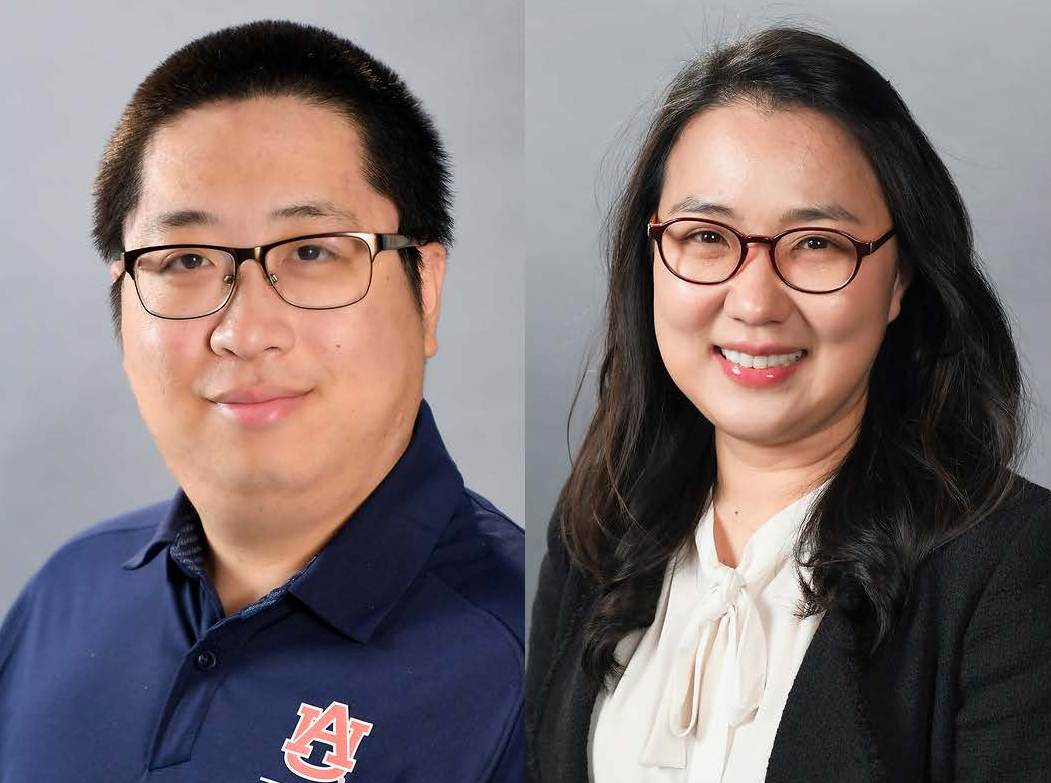
From left: Kangkang Qi is an assistant professor of information systems management and Sumin Han is an assistant professor in the Department of Systems and Technology in Auburn’s Raymond J. Harbert College of Business.
Categories: Advanced Systems, Cyber, Health Sciences
Fired up: Auburn University researchers studying how controlled burns could help mitigate effects of wildfires
The news is often filled with stories about wildfires and the widespread damage caused when they burn out of control. A combustion expert in Auburn University’s Department of Aerospace Engineering in the Samuel Ginn College of Engineering is studying how the absence of managed control burns could be a significant contributor to this problem.
Assistant Professor David Scarborough and his graduate research assistant, Daniel Stubbs, are conducting studies on the characteristics of wildfire burning and the ways that naturally occurring fuels—largely ground litter vegetation—interact. Their objectives include, among other things, collecting data to support the use of prescribed—or controlled—burning as a means for mitigating the devastation caused by wildland fires. John Kush, a research fellow and forest ecology expert in the School of Forestry and Wildlife Sciences, has also contributed to the ongoing project.
“We are seeking to learn more about how wildfires and the fuels that feed them interact,” Scarborough said. “Forestry researchers are not usually focused on combustion research, so we joined with forestry in this study. We are trying to use our expertise in combustion and fluid dynamics to serve and contribute to a large, important state and regional industry. This project gives us a platform to conduct relevant research and compile valuable data.”
Using their laboratory apparatus—dubbed the Wildland Fire Integrated Research Experiment, or WildFIRE—Scarborough and his team simulate wildland fires under a variety of conditions and fuel compositions. WildFIRE is a laboratory-scale experiment that incorporates high-speed, high-resolution optical diagnostics along with more traditional diagnostics, such as fuel mass consumption, temperature and emissions measurements, to investigate the effects of fuel composition and moisture content, terrain slope and wind speed on the combustion of wildland fuels. WildFIRE is used to obtain important data on such factors as flame height, flame propagation speed, fuel consumption rate, harmful emissions and residual fuel mass to compare with and improve modeling tools that are used to simulate wildfires.
“Our primary focus is on combustion of loblolly pine needles, because this is widespread in Southeastern forests,” Scarborough said. “We are trying to better understand how pine needles burn under a variety of natural conditions. We also employ optical diagnostics to observe flames to visually measure various flame characteristics. By studying these situations under controlled conditions, we are able to gather very accurate data and make predictions about how a wildfire will react under specific situations and conditions.”
Their study has been underway for a number of years. It began around the time of the huge Smoky Mountains wildfire in the Gatlinburg, Tennessee, area in 2016. More recent wildfires in the western United States have spawned further interest within the forestry and fire safety communities, according to Scarborough.
Scarborough noted the economic impact of the forestry industry as the catalyst behind this research: “Forestry is a major part of the Alabama, United States and world economies.”
According to the Alabama Forestry Commission, Alabama forests generate more than $21 billion in revenue annually and provide 122,000 jobs. There are 23 million acres of timberland in Alabama, accounting for 69 percent of the total land area in the state.
Alabama has the third most timberland acreage in the 48 contiguous states, behind only Georgia and Oregon. Wildfire poses significant risks to wildlife, forests, human life and property, not to mention the potential environmental impact in both smoke and harmful, gaseous pollutants, he explained.
“Wildfire was once a common, frequently occurring, natural disturbance initiated most commonly by lightning in numerous ecologically important ecosystems,” Scarborough added. “However, across much of the modern landscape, the fire process has been significantly altered and sometimes eliminated through human intervention. In the absence of fire, leaves, evergreen needles and small sticks accumulate on the forest floor over the period of many years. Furthermore, many invasive woody species such as wax myrtle and yaupon holly grow uncontrolled under the tree canopy.
“Therefore, fire, when it does finally occur, as it most assuredly will, often rages out of control, propagating rapidly with high-heat intensity and long flames as it consumes many years’ worth of accumulated fuel and woody plants.”
Foresters have long known that a practice known as prescribed burning is a valuable and effective fire control application, according to Scarborough, but this practice is not applied as frequently for a number of reasons.
“Prescribed, or controlled, burning is a type of intervention that seeks to provide the benefits of natural wildland fires while minimizing the potential threats to property and other anthropogenic concerns,” Scarborough said. “These prescribed burns, when repeated at frequent intervals, serve to consume the fuel materials on the forest floor while managing invasive species. This, in turn, reduces the amount of potential fuels accumulated on the forest floor.”
Although prescribed fire reduces the risk of damaging wildfire and promotes forest restoration and wildlife habitat, significant regulatory restrictions and public perception pose hurdles to the use of prescribed fire. But better data could help change that.
“The primary reason is that data on wildfire and prescribed burns are difficult to obtain due to the cost and risks posed from fire on the scale at which wildland fires occur,” Scarborough said. “On the opposite end of this spectrum, small-scale laboratory studies fail to include many relevant factors.”
This is where the work of Scarborough and his team is making a valuable contribution. The Wildland Fire Integrated Research Experiment is a wildland fire combustion research facility capable of simulating burn areas up to several square meters, located at Auburn University’s Combustion Physics Laboratory, or AUCPLAB.
“WildFIRE is a unique facility among universities in that it is an intermediate-scale facility bridging the gap between traditional university bench-scale experiments, which are typically within the centimeter scale, and full-scale research fires conducted by governmental laboratories,” Scarborough said.
Burn experiments are conducted by simulating a variety of environmental conditions and incorporating different types of fuel source combinations, he explained.
“Our research provides an intermediate-scale facility designed to obtain data on the combustion and emissions properties of wildland fuels under field-relevant conditions that can be used to validate computer simulations of wildland fires and compare with field wildfire and controlled burn observations,” Scarborough said.
Scarborough noted the ultimate goal of the lab’s research is to develop optical diagnostics that are useful in the study of wildland fires in the field and to provide data that help to validate existing wildfire data on combustion, controlled burning and other characteristics surrounding the nature of wildfires.
Also, their hope is that, by better understanding how wildfires interact with the fuel sources and environmental conditions feeding them, they can help in the development of better ways to mitigate the damage caused by out-of-control wildfires by providing a deeper understanding about the combustion properties of fire and fuels.
BY MITCH EMMONS
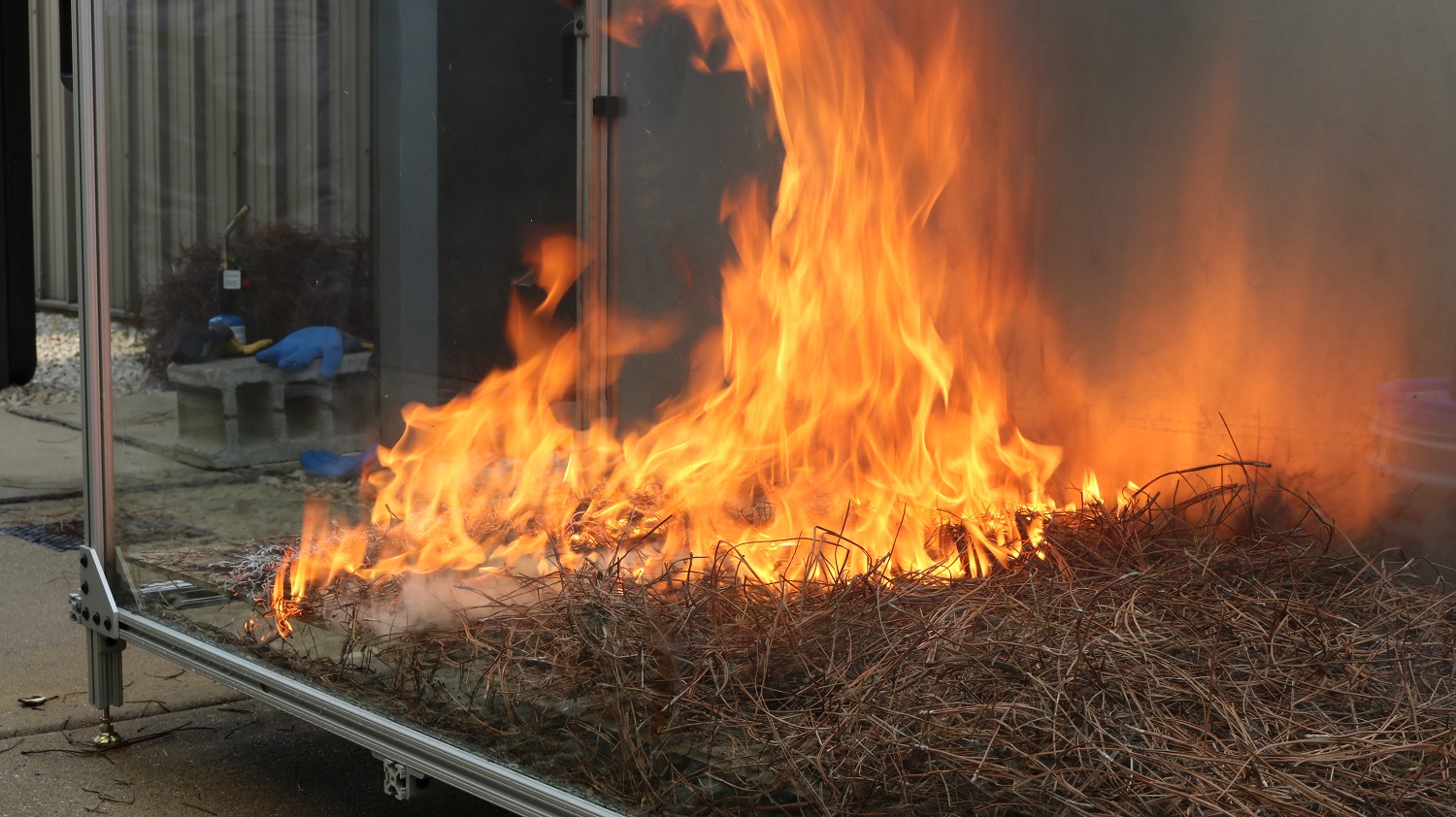 Using their laboratory apparatus—dubbed the Wildland Fire Integrated Research Experiment (WildFIRE)—David Scarborough and research team simulate wildland fires under a variety of conditions and fuel compositions.
Using their laboratory apparatus—dubbed the Wildland Fire Integrated Research Experiment (WildFIRE)—David Scarborough and research team simulate wildland fires under a variety of conditions and fuel compositions.
Categories: Advanced Systems, Energy & the Environment, Engineering
NSF grant to allow Auburn professors to study how nanomaterials disperse in liquids
As consumer electronics get smaller, the need for smaller parts, such as batteries, grows. Researchers are actively exploring additive manufacturing techniques to create the necessary smaller parts, but they first need to establish a fundamental understanding of the nanomaterial known as MXenes.
Virginia Davis, the Dr. Daniel F. and Josephine Breeden Professor of chemical engineering, and Majid Beidaghi, associate professor of materials engineering, are working to evaluate the properties of MXenes with a $328,420 National Science Foundation award for their project “Understanding the Effects of Sheet Size and Salt Addition on Aqueous MXene Dispersions: Phase Behavior, Rheological Properties and Printability.”
“MXenes are a new material and they have a lot of amazing properties and potential in applications such as batteries, supercapacitors and things that power our everyday devices,” Davis said. “However, in order to enable them to be used in these applications, we have to understand how to process them into different structures.”
MXenes are a family of 2D crystalline nanomaterials composed of transition metal carbides, nitrides or carbonitrides. One advantage of MXenes is that they can be dispersed in water and processed into devices and structures using fluid phase processing techniques such as direct ink writing, a specialized 3D printing technique. To date, advances in MXene processing have required time-consuming and expensive trial-and-error approaches.
“Our grant is looking at using fundamental tools for understanding how solids disperse in liquids and to gain new insight as to the behavior of (MXenes) to enable them to be printed into small devices using additive manufacturing,” Davis said. “In this grant we’re particularly looking at MXenes in the context of other 2D or sheet-like nanomaterials. If we can understand those fundamental principles that govern these sheet-like materials, then we can apply it to other new materials that we may discover or make materials we already know about, such as nanoclays, work even better.”
This topic represents a natural cross-section of Davis’ and Beidaghi’s specialized research areas. Beidaghi has studied MXenes and their potential since he was a post-doctoral research fellow at Drexel University. Davis is interested in understanding how to effectively process nanomaterials and how they flow in liquids.
“Really it was both of us coming together at Auburn that allowed us to tackle both parts of the problem, the materials chemistry part and the phase behavior part,” Davis said.
The two plan to collaborate with other researchers to advance the experimental and theoretical methods to study dispersions of nanomaterials.
Media Contact: Cassie Montgomery, cmontgomery@auburn.edu, 334.844.3668
BY CASSIE MONTGOMERY

From the left: Virginia Davis and Majid Beidaghi
Categories: Advanced Systems, Engineering, Manufacturing
Auburn debuts sophisticated new autonomous vehicle research facility
Auburn University recently opened the doors to a sophisticated new autonomous vehicle research facility at Auburn’s National Center for Asphalt Technology test track — one of the few facilities of its kind in the nation attached to a test track.
The addition will aid researchers in Auburn University’s GPS and Vehicle Dynamics Laboratory, whose work is frequently conducted outdoors.
The facility provides a garage with multiple bays and lifts for commercial trucks and passenger vehicles, office space for researchers, a conference room and an observation area overlooking NCAT’s 1.7-mile oval test track.
“The fact that we have our own test track where we can run autonomous vehicles and autonomous testing attached to this facility I think is an unbelievably unique asset,” said David Bevly, the Bill and Lana McNair Distinguished Professor of mechanical engineering and co-director of the GAVLAB along with assistant research professor Scott Martin.
Since Bevly joined the Auburn Engineering faculty in 2001, the GAVLAB has built a strong reputation in autonomous vehicle navigation and developed a broad sponsored research portfolio, with projects ranging from the Department of Defense and the Federal Highway Administration to many private industry partners.
With various sponsors visiting each month, the facility’s planned observation area gives the GAVLAB team a high-quality space to demonstrate its research. Bevly’s group has also conducted demonstrations for legislators and the Alabama Department of Transportation.
“It’s a great facility for us as a team, but also allows us to showcase our work,” Bevly said.
With a growing research thrust in transportation engineering, the autonomous research facility also demonstrates Auburn’s commitment to supporting these research initiatives.
“Auburn is a major player in transportation engineering research in the nation,” said Steve Taylor, associate dean for research. “The GAVLAB and our other transportation engineering researchers have brought in nearly $50 million in sponsored research awards over the past three years. This new facility is an exciting development for Auburn and there will be much more to come.”
BY CHRIS ANTHONY
Media Contact: Jeremy Henderson, jdh0123@auburn.edu, 334-844-3591
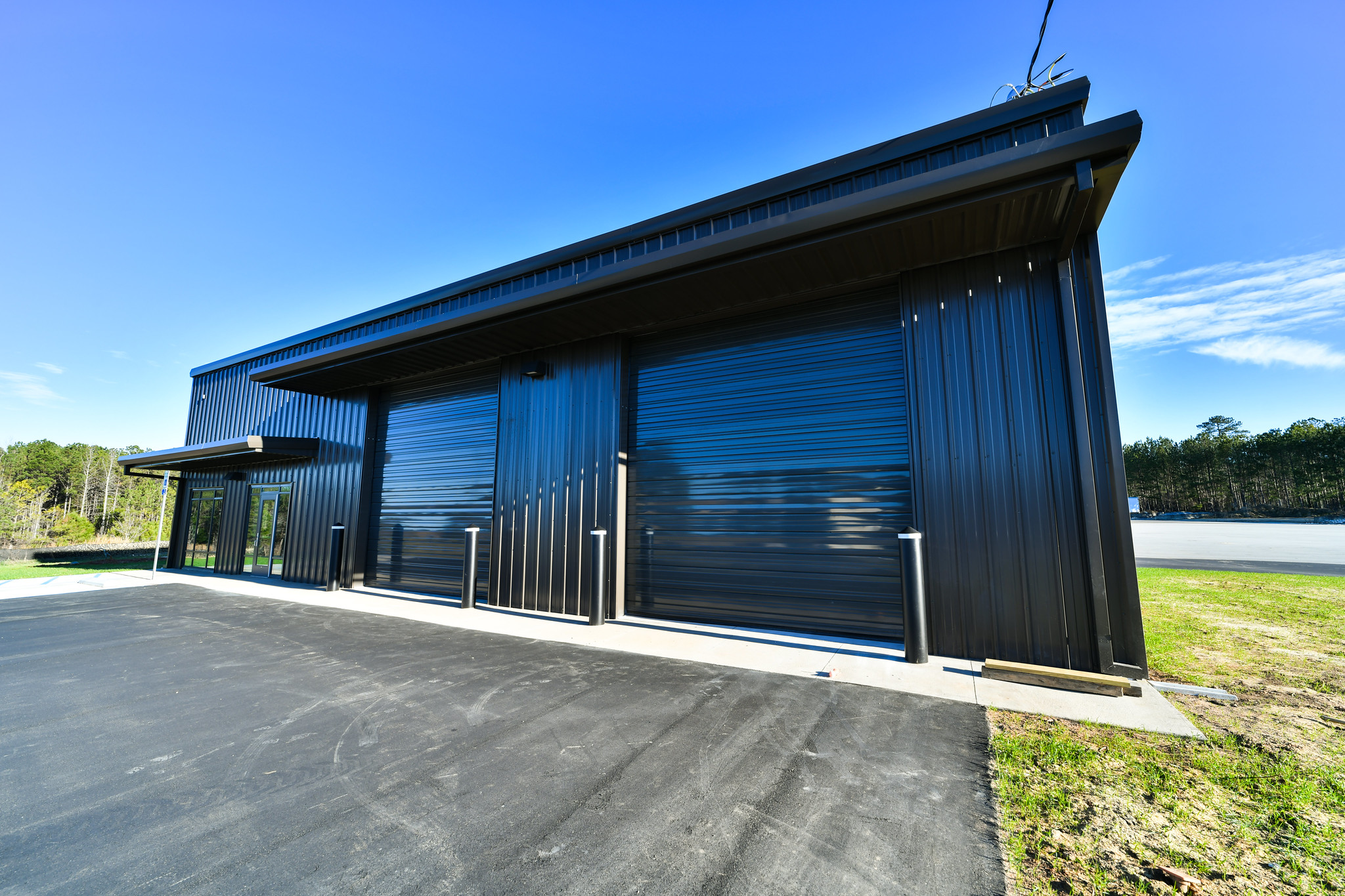
Auburn University's new autonomous vehicle research facility
Categories: Advanced Systems, Transportation, Engineering
Auburn, UCLA faculty teaming up to develop micro-scale magnetic shields
An Auburn Engineering faculty member recently received a United States Office of Naval Research subcontract to work on a new technology that will use custom additively manufactured micro-scale shields to help protect electronics from magnetic fields, while also allowing integration of fiber optics for optical communication.
Michael Hamilton, the James B. Davis Professor of electrical and computer engineering and director of the Alabama Micro/Nano Science and Technology Center, will work with Systems Visions, a local company that provides engineering principles to design and develop structures, systems and processes, on new technologies to help shield sensitive superconducting electronic chips from magnetic fields while still allowing for signals to be sent and received through integrated fiber optics.
Hamilton will collaborate on this project with Robert Candler, professor of electrical and computer engineering at the University of California, Los Angeles. Hamilton and Candler graduated in the same class from Auburn University with bachelor’s degrees in electrical engineering in 2000.
“Interestingly enough, Rob is not just my colleague, but my friend who also went to Auburn at the same time I did,” Hamilton said. “We’ve been looking for a project to work on together for a while, so it was nice to find something that lined up both with what he’s working on and with what I’m working on.”
Hamilton said the duo are in phase one of the project with multiple challenges to overcome before a working prototype can be developed. Some challenges include engineering the technology to withstand ultra-cold temperatures around 4 Kelvin (-452 degrees Fahrenheit) and scaling down the integration of the fiber optics to about 10 millionths of a meter in diameter – 10 times smaller than a strand of hair.
“We’re characterizing these magnetic shields and making big strides in the steps toward building those little photonic structures,” Hamilton said. “Another piece of this project is observing how these micro-scale structures behave when we cool them down to a very low temperature and seeing if there’s a way we can engineer the interfaces and materials to perform better when you make it cold.”
Hamilton said he is confident that he and his team will work through the challenges of social distancing in the new normal with COVID-19 and that he is eager to contribute to the advancement of this technology under this subcontract.
“We’ve actually been really fortunate at Auburn where research can continue,” Hamilton said. “I know there are some places that had to just shut everything down, but we’ve been able to keep things going at a pretty good pace.”
BY VIRGINIA SPEIRS
Media Contact: Chris Anthony, chris.anthony@auburn.edu, 334.844.3447
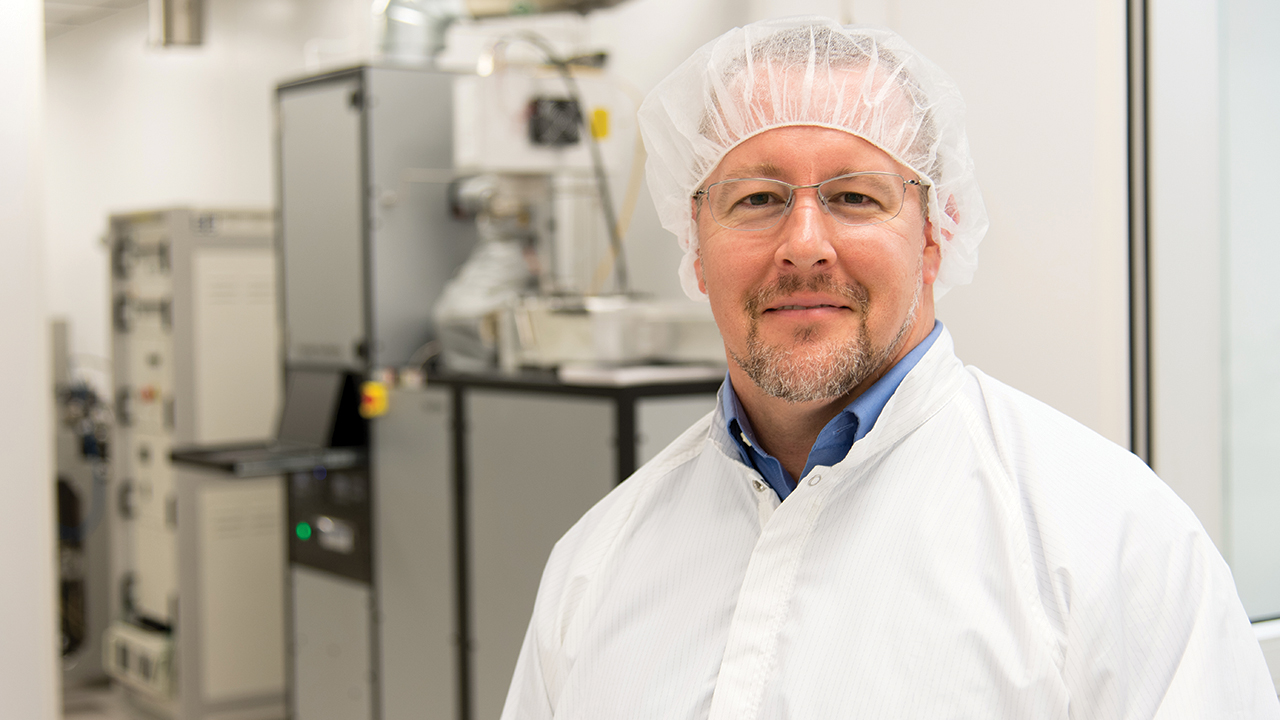 Michael Hamilton
Michael Hamilton
Categories: Advanced Systems, Engineering, Manufacturing
Auburn University Interdisciplinary Center for Advanced Manufacturing wins $4.26 million DOD award
The Interdisciplinary Center for Advanced Manufacturing Systems, or ICAMS, at Auburn University has received a $4.26 million award from the U.S. Department of Defense to explore the digitalization of manufacturing and become a resource for small and medium manufacturers throughout the country.
“The most significant way ICAMS can make a difference is in helping small and medium manufacturers understand the technologies they should be utilizing and helping them understand the need for adopting Industry 4.0/Smart Manufacturing concepts, therefore really digitalizing the full supply chain,” said Gregory Harris, ICAMS director and associate professor of industrial and systems engineering.
There is a growing digital divide between large manufacturers and the small- to medium-sized manufacturers that make up 85% of the industrial base in the United States. These large, original equipment manufacturers have blended their manufacturing physical and virtual domains into an Industry 4.0 environment, achieving positive productivity results. ICAMS researchers hope to help close this gap, in part by promoting advanced manufacturing principles to create a skilled workforce pipeline that starts in high school and continues through community college and beyond.
“The ideal student coming into this program is somebody who is a cross between a mechanical engineer, an industrial and systems engineer and a computer scientist. It’s a very interdisciplinary environment where, if you’re interested in computers and making things and realizing innovations, you will thrive. That’s the kind of student we’re looking for,” Harris said.
ICAMS is led by Harris and several additional faculty members from the Department of Industrial and Systems Engineering: assistant professor Peter Liu, assistant professor Konstantinos Mykoniatis, associate professor Lewis Payton and assistant professor Gregory Purdy. The center is also supported through a partnership with the City of Auburn’s Industrial Development Board, which has provided a facility to house large equipment and provide a hands-on learning laboratory for ICAMS students.
“Part of what we’re doing with ICAMS is helping develop the skill base and the skillsets needed so that the community college system and high schools can train students in the new technologies to be potential employees,” he explained. “We’re working with industry to train their current employees in these new capabilities and create a more effective system. Finally, we’re training engineers to be able to go out and help design, build and run these systems, thus ushering in the future of manufacturing.”
BY CASSIE MONTGOMERY
 The Interdisciplinary Center for Advanced Manufacturing, or ICAMS, at Auburn University, housed within the Department of Industrial and Systems Engineering, is led by, from left to right, Lewis Payton, associate research professor; Greg Purdy, assistant professor; Greg Harris, ICAMS director and associate professor; Peter Liu, assistant professor; and Konstantinos Mykoniatis, assistant professor.
The Interdisciplinary Center for Advanced Manufacturing, or ICAMS, at Auburn University, housed within the Department of Industrial and Systems Engineering, is led by, from left to right, Lewis Payton, associate research professor; Greg Purdy, assistant professor; Greg Harris, ICAMS director and associate professor; Peter Liu, assistant professor; and Konstantinos Mykoniatis, assistant professor.
Categories: Advanced Systems, Manufacturing


